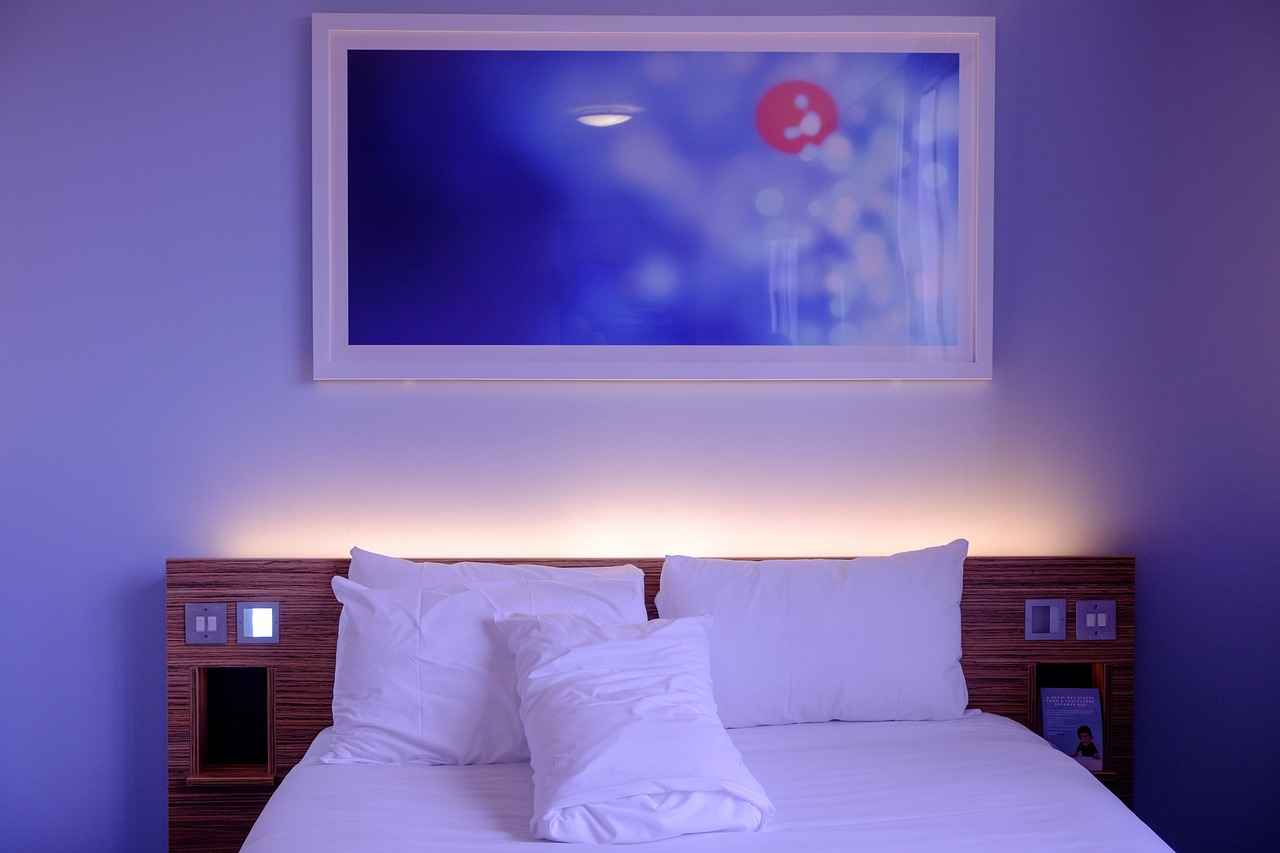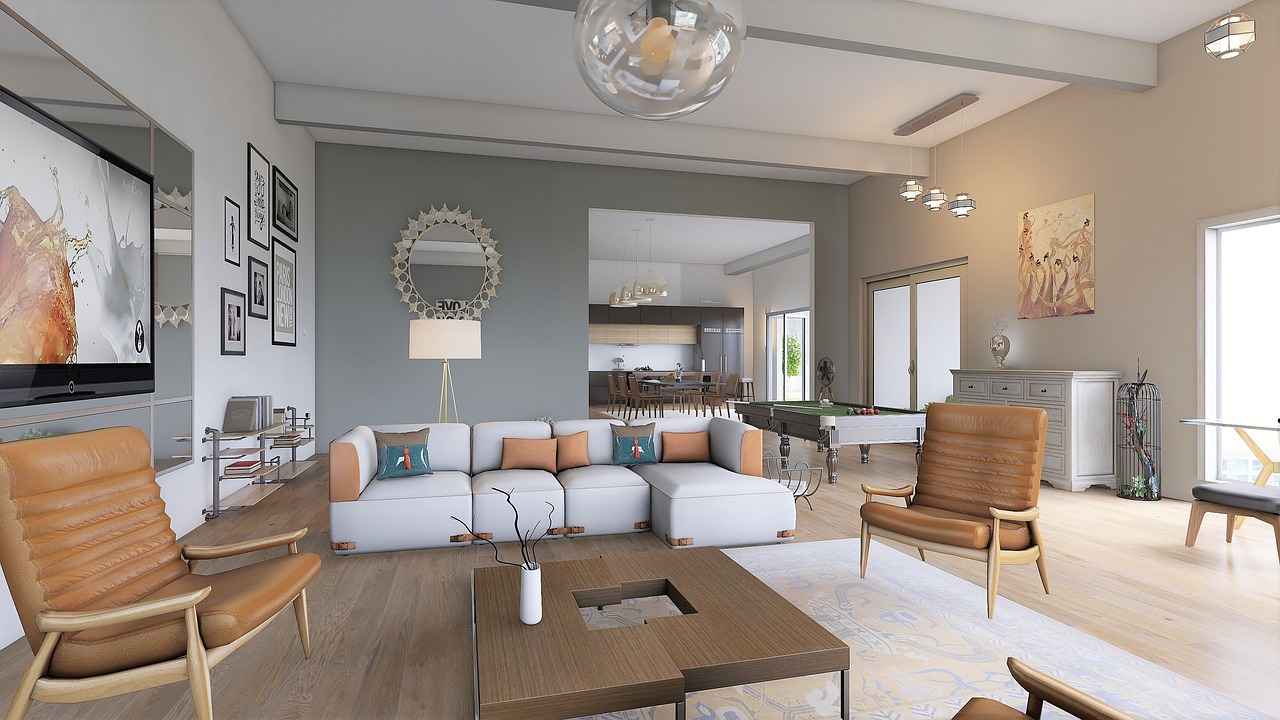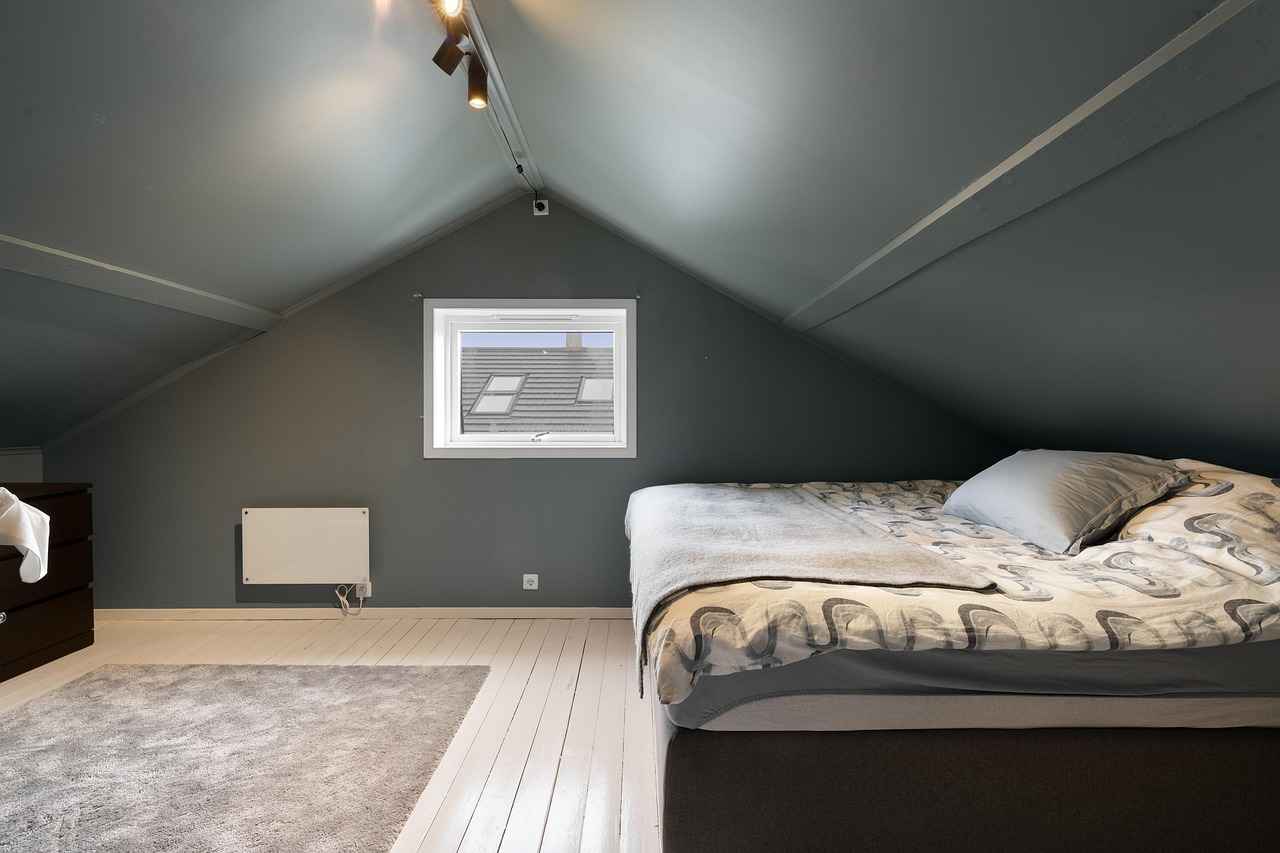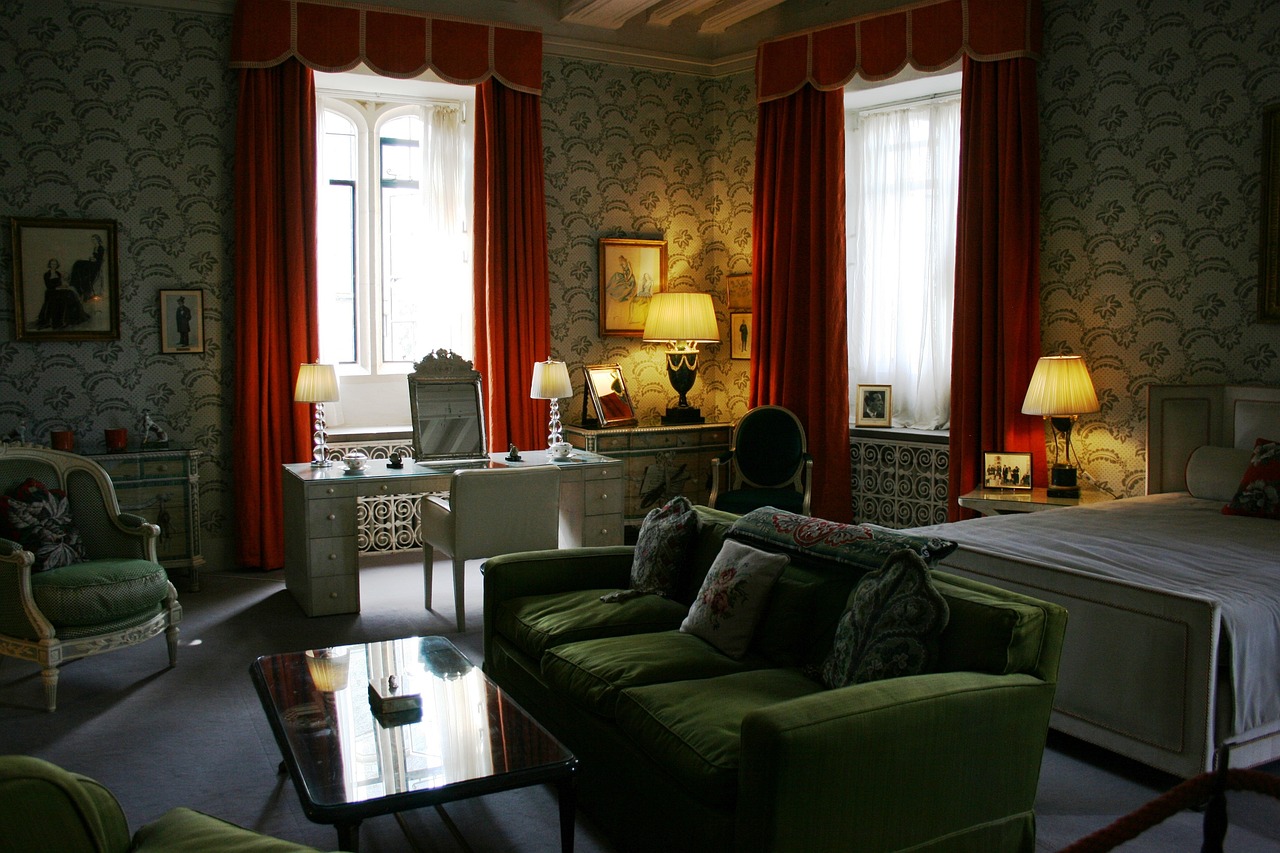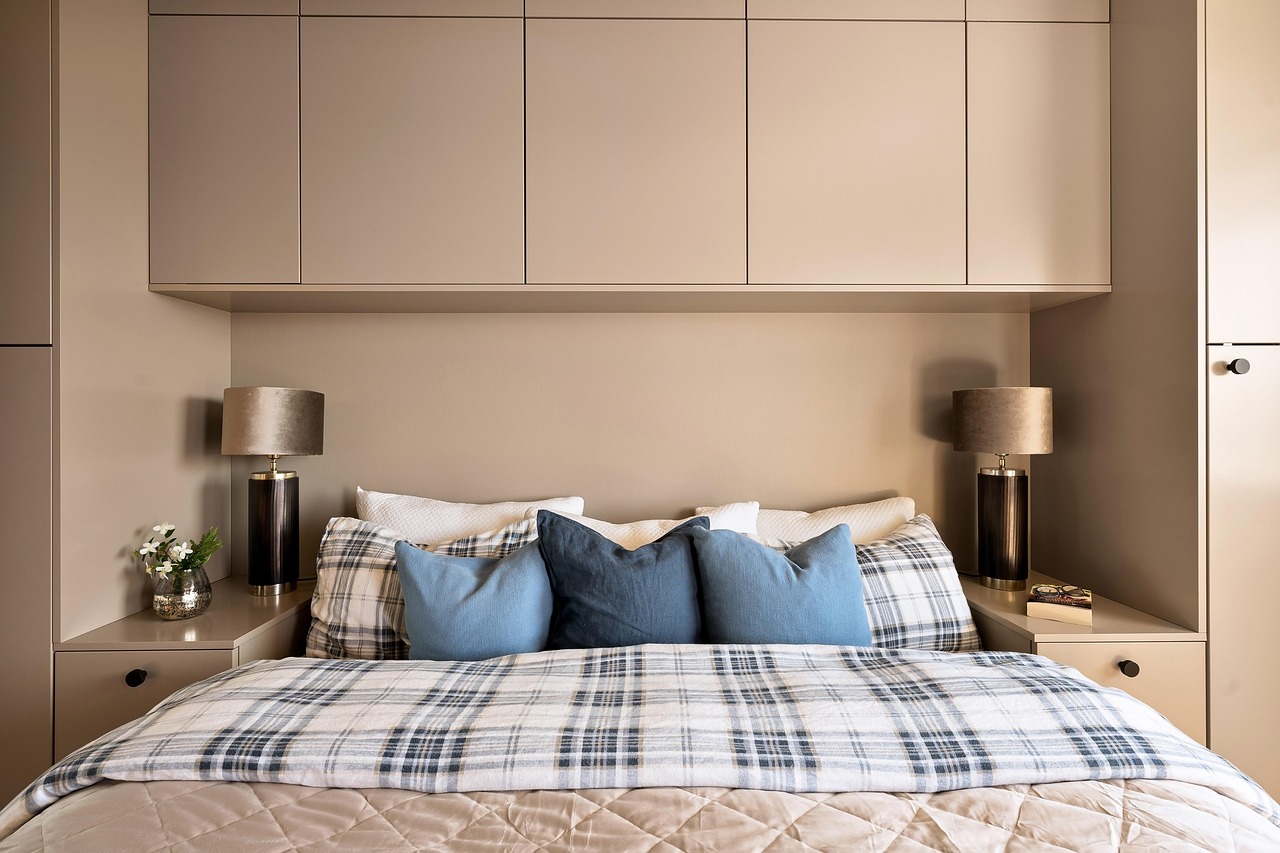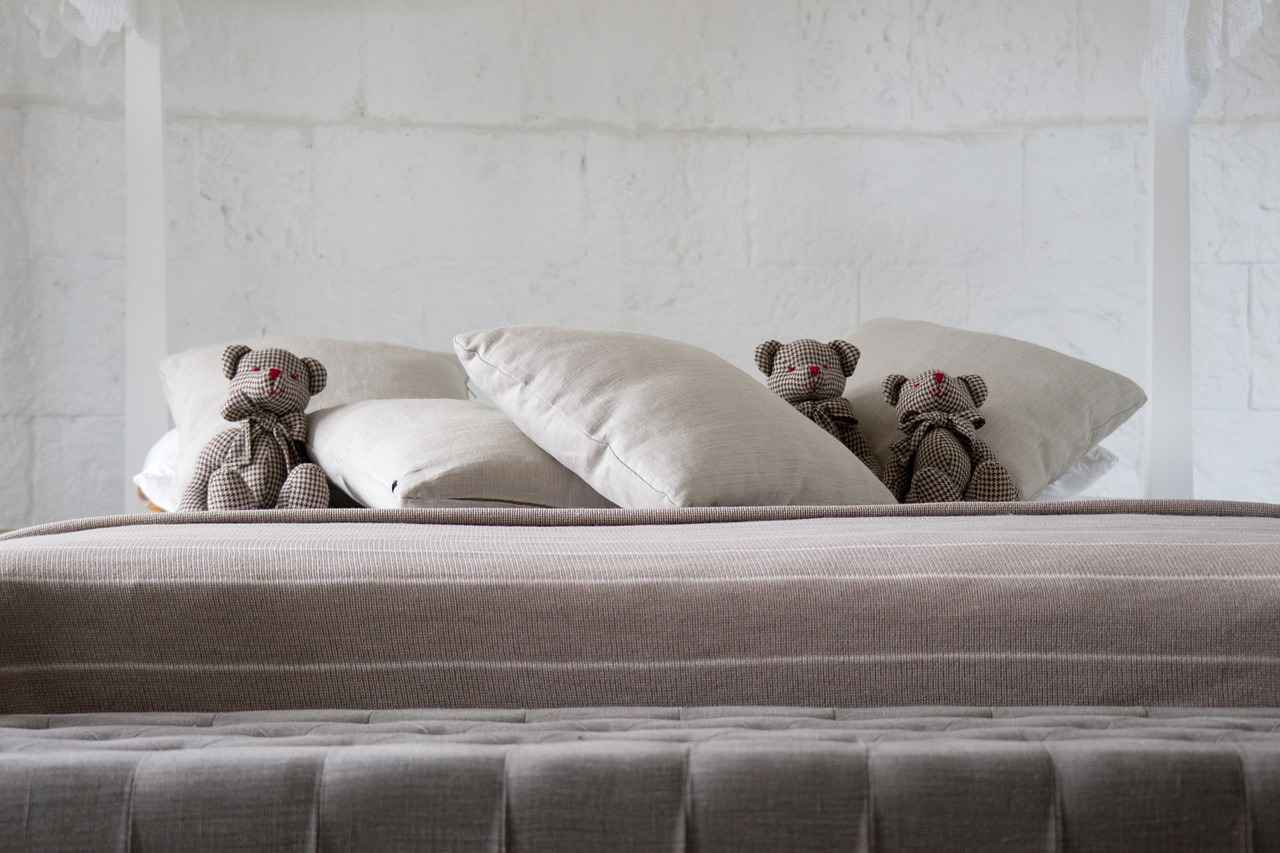Transforming your bedroom into a stylish sanctuary starts with innovative bed wall design ideas. The bed wall is often the focal point of a bedroom, and its design can significantly influence the overall ambiance. From choosing the right color schemes to experimenting with creative layouts, there are numerous ways to enhance your personal space effectively.
- The Power of Color in Bed Wall Design
Colors play a crucial role in setting the mood of a room. For instance, soft blues and greens can evoke a sense of calm, while vibrant reds and yellows can energize the space. Consider the psychological effects of colors when selecting a hue for your bed wall. A bold accent wall can create a striking contrast, while a soft palette can promote relaxation.
- Textured Wall Treatments for Depth
Adding textures to your bed wall can introduce depth and visual interest. Options such as wallpaper, wood paneling, or fabric can enhance your bedroom decor. For example, textured wallpaper can create a cozy feel, while wood paneling adds warmth and sophistication.
- Creative Headboard Ideas to Enhance Your Bed Wall
Headboards can serve as stunning design elements. Consider DIY projects that allow you to express your creativity. Whether you choose an upholstered headboard for a plush look or a wooden one for a rustic feel, headboards can redefine your bed wall.
- Incorporating Artwork Above the Bed
Artwork can transform a plain wall into a captivating focal point. Curate a gallery wall with personal photos or select a large-scale piece that resonates with your style. The arrangement and selection of artwork can greatly enhance the overall aesthetic of your bedroom.
- Lighting Solutions for Bed Wall Design
Lighting is essential in enhancing the beauty of your bed wall. Wall sconces can provide both illumination and style while string lights can add a whimsical touch. Experiment with different lighting solutions to create the desired ambiance.
- Utilizing Shelving for Practical Decor
Shelving can serve as both a decorative and functional element. Floating shelves offer a modern look, while built-in shelving can maximize space. Use these shelves to display books, plants, and personal items, contributing to your unique decor.
- Plant Decor: Bringing Nature Indoors
Incorporating plants into your bed wall design can enhance the atmosphere. Vertical gardens or hanging planters can create a lush feel, adding vibrancy and life to your space. Choose plants that thrive indoors to maintain a healthy environment.
- Mirrors: Enhancing Light and Space
Strategically placing mirrors can make your bedroom feel larger and brighter. A statement mirror above the bed can serve as a stunning centerpiece, reflecting light and adding depth to the room.
- Minimalist Bed Wall Ideas for a Clean Aesthetic
A minimalist approach can create a serene environment. Consider monochromatic color schemes and simple decor elements that add character without overwhelming the space. This simplicity promotes relaxation and tranquility.
- Bold Patterns and Prints for a Statement Wall
For those who love drama, bold patterns can add excitement to your bed wall. Geometric patterns can create a contemporary vibe, while floral prints can introduce a romantic touch. Incorporate these designs thoughtfully to ensure they harmonize with your overall decor.
- Seasonal Decor Changes for a Fresh Look
Changing your bed wall decor with the seasons can keep your bedroom feeling fresh. Light, airy decor can evoke spring and summer, while warm colors and cozy textures can create a welcoming atmosphere in autumn and winter.
- Final Tips for Designing Your Bed Wall
Implementing the right design elements can elevate your bed wall. Consider your personal style and preferences when selecting colors, textures, and decor elements. A well-designed bed wall can significantly enhance your bedroom’s overall aesthetic.
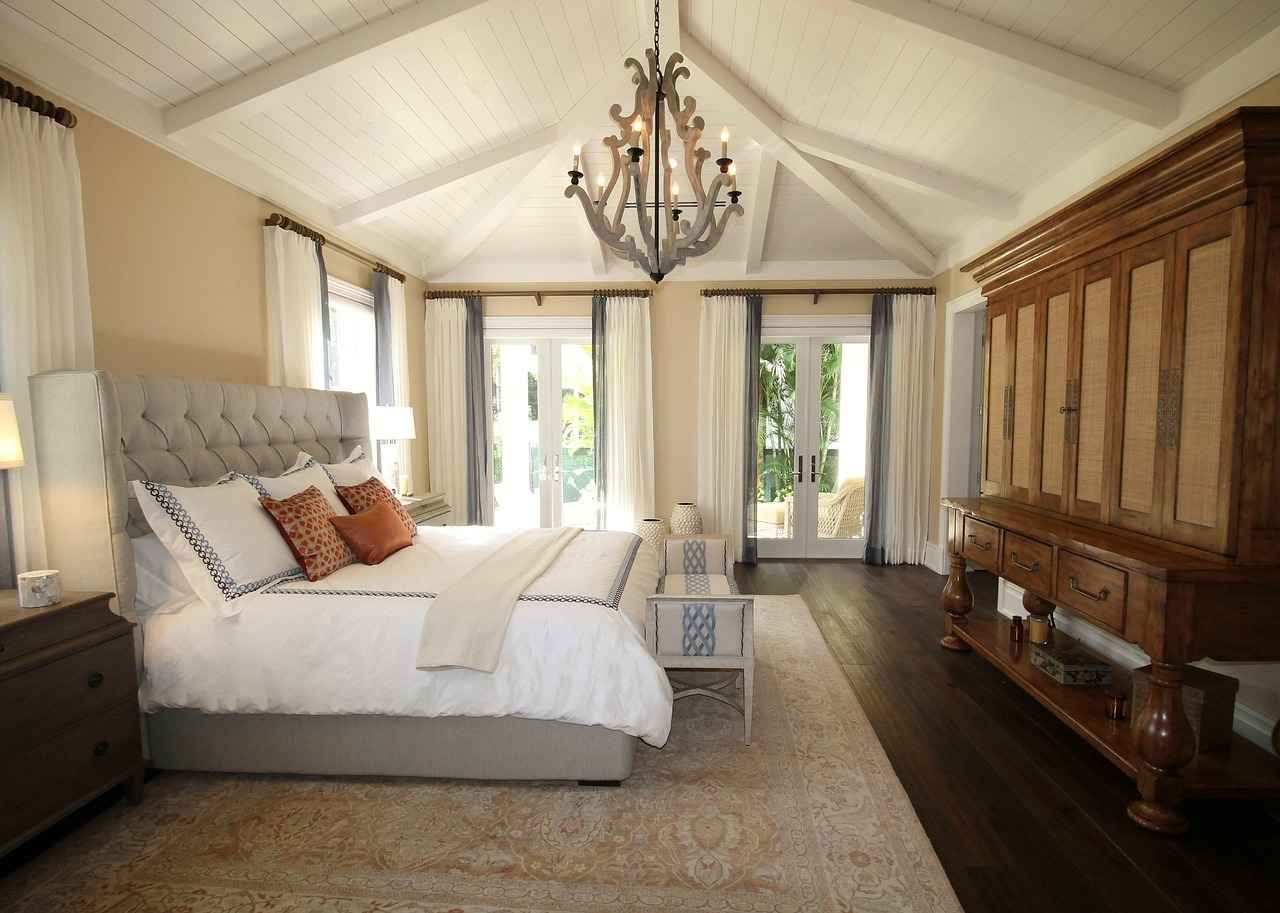
1. The Power of Color in Bed Wall Design
When it comes to bedroom decor, the color of your bed wall plays a pivotal role in setting the overall mood and atmosphere of the space. Understanding color psychology can help you make informed choices that resonate with your personal style and emotional needs. Different shades can evoke a variety of feelings, from calmness to excitement, making it essential to select the right hue for your sanctuary.
Warm colors such as reds, oranges, and yellows can create a sense of energy and vibrancy. These colors are often associated with feelings of warmth and comfort, making them ideal for spaces where you want to feel invigorated. For instance, a rich terracotta or a soft peach can bring a cozy yet lively atmosphere to your bedroom.
On the other hand, cool colors like blues, greens, and purples are known for their calming effects. These shades can help create a serene environment, perfect for relaxation and unwinding after a long day. A soothing light blue or a gentle sage green can transform your bed wall into a tranquil retreat, promoting better sleep and relaxation.
Additionally, neutral colors such as whites, grays, and beiges offer versatility and a sense of balance. They can serve as a perfect backdrop for more vibrant decor elements, allowing you to play with accents and accessories without overwhelming the space. A soft gray or creamy beige can provide a timeless elegance that complements various styles, from modern to rustic.
When selecting a color, consider the size and lighting of your bedroom. Lighter shades can make a small room feel more spacious and airy, while darker colors can create a cozy, intimate feel. If your bedroom receives ample natural light, you might experiment with deeper hues, as they can add drama without making the space feel cramped.
Furthermore, think about the emotions you wish to evoke in your bedroom. If you want to inspire creativity, consider incorporating vibrant colors or bold patterns. If relaxation is your goal, softer, muted tones are more appropriate. Your bed wall can also be a canvas for expressing your personality through color choices.
In conclusion, the power of color in bed wall design cannot be underestimated. By understanding the emotional impact of different shades and considering your personal preferences, you can create a bedroom environment that not only looks beautiful but also enhances your well-being. Take the time to experiment with samples and visualize how each color interacts with your existing decor. Remember, your bedroom should reflect your unique style while providing a peaceful haven for rest and rejuvenation.

2. Textured Wall Treatments for Depth
In the realm of interior design, textured wall treatments stand out as a powerful tool to create depth and visual interest in any room, especially above the bed. By incorporating various textures, you can transform a simple wall into a stunning focal point that enhances your bedroom decor.
Textures can evoke feelings of warmth and comfort, making your bedroom a more inviting space. They can also play a significant role in color perception, affecting how hues are viewed and experienced. When you add texture, you create a dynamic interplay of light and shadow, which can further enhance the overall aesthetic of your bedroom.
- Wallpaper: Wallpaper is a versatile option that comes in a wide array of patterns and finishes. From bold designs to subtle textures, it can dramatically change the ambiance of your space. Textured wallpaper, in particular, can add dimension and intrigue, making it a popular choice for accent walls.
- Wood Paneling: Wood paneling offers a timeless appeal and can introduce a sense of warmth and sophistication. Whether you choose reclaimed wood for a rustic feel or sleek, modern panels, wood can serve as a stunning backdrop for your bed.
- Fabric Treatments: Fabrics, such as upholstered panels or fabric wall art, can create a soft, inviting atmosphere. They not only add texture but also contribute to sound insulation, making the room feel cozier.
- Textured Paint: Textured paint techniques, like sponging or rag rolling, can create unique finishes that add depth without overwhelming the space. This option allows for a more customizable approach to achieving the desired look.
When selecting a textured treatment for your bed wall, consider the overall theme of your bedroom. For a modern aesthetic, sleek wood paneling or minimalist wallpaper may be ideal. Conversely, if your style leans towards bohemian, vibrant patterned wallpaper or layered fabrics could enhance your decor.
Don’t hesitate to mix and match different textures to create a more dynamic look. For instance, pairing a wooden headboard with a fabric wall treatment can add depth and interest. Additionally, incorporating decorative elements like framed artwork or shelves can further enhance the textured effect.
Textured walls can require different maintenance depending on the material used. For example, fabric treatments might need regular cleaning, while wood paneling may benefit from periodic polishing to maintain its luster. Always refer to the manufacturer’s guidelines to ensure your textured wall remains in pristine condition.
Incorporating textured treatments into your bed wall design can significantly enhance the overall aesthetic of your bedroom. By exploring various options like wallpaper, wood paneling, and fabric, you can create a unique and inviting space that reflects your personal style. Remember to consider the interplay of different textures and maintain them properly to ensure they remain a focal point in your decor.
2.1. Wallpaper Options for a Unique Look
Wallpaper has become a popular choice for homeowners and decorators looking to add a distinctive flair to their spaces. With a multitude of styles, colors, and textures available, wallpaper offers endless design possibilities that can transform any room. This section will delve into various wallpaper options, providing insights on how to choose the perfect wallpaper that reflects your personal style while enhancing the overall aesthetic of your bedroom.
When selecting wallpaper, it is essential to consider the style that resonates with your vision for the room. Here are some popular wallpaper styles:
- Bold Patterns: These wallpapers feature striking designs, such as geometric shapes, florals, or abstract art. They can serve as a statement piece, drawing attention and creating a focal point in the room.
- Subtle Textures: Textured wallpapers can add depth without overwhelming the space. Options like grass cloth, linen, or embossed patterns provide a sophisticated backdrop that complements various decor styles.
- Classic Prints: Timeless designs, such as damask or toile, can add a touch of elegance and tradition to your bedroom. These prints often work well in more formal settings.
- Modern Minimalism: For those who prefer a clean and simple aesthetic, minimalist wallpapers in soft colors or understated patterns can enhance the serenity of a bedroom.
The color of your wallpaper plays a crucial role in setting the mood of the room. Lighter colors can create an airy and spacious feel, while darker shades can add warmth and intimacy. Consider the following tips when selecting your wallpaper color:
- Color Psychology: Different colors evoke different emotions. For instance, blues and greens are calming, while yellows and oranges can energize a space.
- Complementing Existing Decor: Ensure that your wallpaper choice harmonizes with your existing furniture and decor. Use swatches to visualize how the colors work together.
- Testing Samples: Always test wallpaper samples on your wall before making a final decision. This allows you to see how the color looks in different lighting throughout the day.
Proper application techniques are essential for achieving a professional-looking wallpaper finish. Here are some tips to ensure a smooth installation:
- Surface Preparation: Ensure your walls are clean, dry, and smooth. Repair any imperfections to create a flawless base for the wallpaper.
- Use of Adhesives: Select the appropriate adhesive for your wallpaper type. Pre-pasted wallpapers may require only water, while others may need a specific paste.
- Alignment: Pay close attention to aligning patterns and seams as you apply the wallpaper. This will ensure a cohesive look throughout the wall.
Once your wallpaper is installed, maintaining it is crucial for longevity. Here are some maintenance tips:
- Regular Cleaning: Dust your wallpaper regularly with a soft cloth. For washable wallpapers, use a damp sponge to clean stains gently.
- Avoid Excessive Moisture: Keep humidity levels in check, as excessive moisture can damage wallpaper. Use dehumidifiers in damp areas.
- Repairing Damage: Address any tears or peeling immediately to prevent further damage. Use wallpaper adhesive or patches for minor repairs.
In conclusion, wallpaper offers a versatile way to express your style while enhancing your bedroom’s aesthetic. By understanding the various styles, colors, and application techniques, you can create a unique look that reflects your personality and elevates your space.
2.1.1. Choosing the Right Pattern
Choosing the right pattern for your wallpaper or decor is essential to achieving a cohesive and aesthetically pleasing environment in your bedroom. Patterns can dramatically influence the mood and style of a space, making it vital to select options that harmonize with your existing decor. Here are some tips to help you make the best choice.
- Understand Your Space: Before selecting a pattern, assess the size and lighting of your room. Small spaces may benefit from lighter, less busy patterns to avoid overwhelming the area, while larger rooms can accommodate bolder designs.
- Consider Color Schemes: Patterns often come with a variety of colors. Choose patterns that incorporate colors already present in your decor. This will help create a seamless transition between different elements in the room.
- Match Your Style: Your personal style plays a crucial role in pattern selection. If your decor leans towards modern, opt for geometric or abstract patterns. For a more traditional look, floral or damask patterns might be more appropriate.
- Texture Matters: Patterns are not just about visuals; they can also add texture. Consider how the texture of a patterned wallpaper or fabric can enhance the overall feel of your space. Textured patterns can add depth and interest to flat surfaces.
- Scale of Patterns: The scale of the pattern is another critical factor. Large-scale patterns can make a bold statement, while smaller patterns may be more subtle. Balance is key; if your room features large furniture, consider larger patterns to maintain proportion.
- Test Samples: Always test samples of your chosen patterns on the wall before committing. This allows you to see how the pattern interacts with the lighting and other decor elements in your space.
Additionally, think about the mood you want to create. For a relaxing atmosphere, softer, muted patterns work best, while vibrant, energetic patterns can inject a sense of liveliness. Remember, the goal is to create a harmonious space that feels inviting and reflects your personal style.
In summary, selecting the right pattern involves careful consideration of your space, color schemes, personal style, texture, and scale. By following these guidelines, you can ensure that your chosen patterns enhance your bedroom decor rather than clash with it. Take your time to explore various options and trust your instincts, as the right pattern can transform your bedroom into a stylish and cohesive sanctuary.
2.1.2. Application Techniques for a Flawless Finish
Application Techniques for a Flawless Finish
When it comes to wallpapering, proper application techniques are essential for achieving a smooth and professional-looking finish. Whether you are a seasoned DIY enthusiast or a first-time wallpaperer, understanding the nuances of wallpaper application can significantly impact the final outcome of your project. Here are some key techniques and tips to ensure your wallpaper looks stunning and lasts for years to come.
- Preparation is Key: Before you even think about applying wallpaper, ensure that the walls are clean, dry, and smooth. Remove any old wallpaper, fill in holes or imperfections, and clean the surface thoroughly. A well-prepared wall is crucial for adhesion.
- Choose the Right Adhesive: Different wallpapers require different types of adhesives. Always read the manufacturer’s instructions to choose the right adhesive for your wallpaper type, whether it be pre-pasted, vinyl, or fabric.
- Measure and Cut Accurately: Measure your wall carefully and cut your wallpaper strips with precision. Always add a few extra inches to the top and bottom of each strip to ensure complete coverage.
- Use a Plumb Line: To ensure that your wallpaper is hung straight, use a plumb line or a level. This is particularly important for patterned wallpaper, as misalignment can be more noticeable.
- Apply Even Pressure: When applying the wallpaper, use a smoothing tool to eliminate air bubbles and creases. Start from the center and work your way outwards, applying even pressure as you go.
- Seam Matching: If your wallpaper has a pattern, take extra care to match the seams perfectly. This attention to detail can make a significant difference in the overall appearance of your wall.
- Trim Excess Wallpaper: After the wallpaper is applied, use a sharp utility knife to trim any excess at the top and bottom. Make sure to cut along the edge of a straightedge for a clean finish.
- Allow to Dry Properly: Once the wallpaper is applied, allow it to dry completely before moving furniture back into place or hanging any decor. This will ensure that the adhesive sets properly and helps prevent peeling.
By following these essential tips and techniques, you can achieve a flawless finish that not only enhances the beauty of your space but also ensures that your wallpaper lasts for years to come. Remember, patience and attention to detail are your best allies in any wallpapering project.
2.2. Wood Paneling: A Timeless Choice
Wood paneling has long been celebrated for its ability to add warmth and sophistication to any bedroom. As a versatile design element, it can transform a simple wall into a stunning focal point, enhancing the overall aesthetic of your personal space. This section explores various styles, finishes, and installation methods, providing you with the insights needed to incorporate wood paneling into your bedroom effectively.
When it comes to wood paneling, there are several styles to consider:
- Shiplap: Known for its clean lines and rustic charm, shiplap is a popular choice for modern and farmhouse-style bedrooms.
- Beadboard: This style features narrow, vertical panels that add texture and a touch of classic elegance.
- Board and Batten: Combining wide boards with narrow battens, this style creates a visually striking look that works well in various decor themes.
- Plank Walls: Using wide planks, this style can create a dramatic effect, especially when stained or painted in bold colors.
The finish you choose for your wood paneling can significantly affect the ambiance of your bedroom. Consider the following options:
- Natural Stains: Highlight the wood’s natural beauty by opting for clear or light stains that enhance the grain.
- Bold Paint Colors: For a contemporary feel, painting wood paneling in bold colors can create a striking contrast against lighter decor.
- Whitewashing: This technique softens the look of the wood while still allowing the texture to shine through, ideal for a beachy or rustic vibe.
Installing wood paneling can be done in several ways, depending on your skill level and the look you want to achieve:
- Directly on Drywall: For a straightforward installation, paneling can be applied directly to drywall using adhesive or nails.
- Framing: For added stability, you might choose to frame the wall with furring strips before attaching the panels.
- Accent Walls: If you’re not ready to commit to an entire room, consider creating an accent wall with wood paneling to add interest without overwhelming the space.
Beyond its aesthetic appeal, wood paneling offers several practical benefits:
- Insulation: Wood naturally provides insulation, helping to regulate temperature and reduce energy costs.
- Sound Dampening: The density of wood can help absorb sound, making your bedroom a quieter retreat.
- Durability: When properly maintained, wood paneling can last for decades, making it a worthwhile investment in your home.
In conclusion, wood paneling remains a timeless choice for bedroom decor, offering both beauty and functionality. By exploring various styles, finishes, and installation methods, you can create a unique and inviting atmosphere that reflects your personal style.
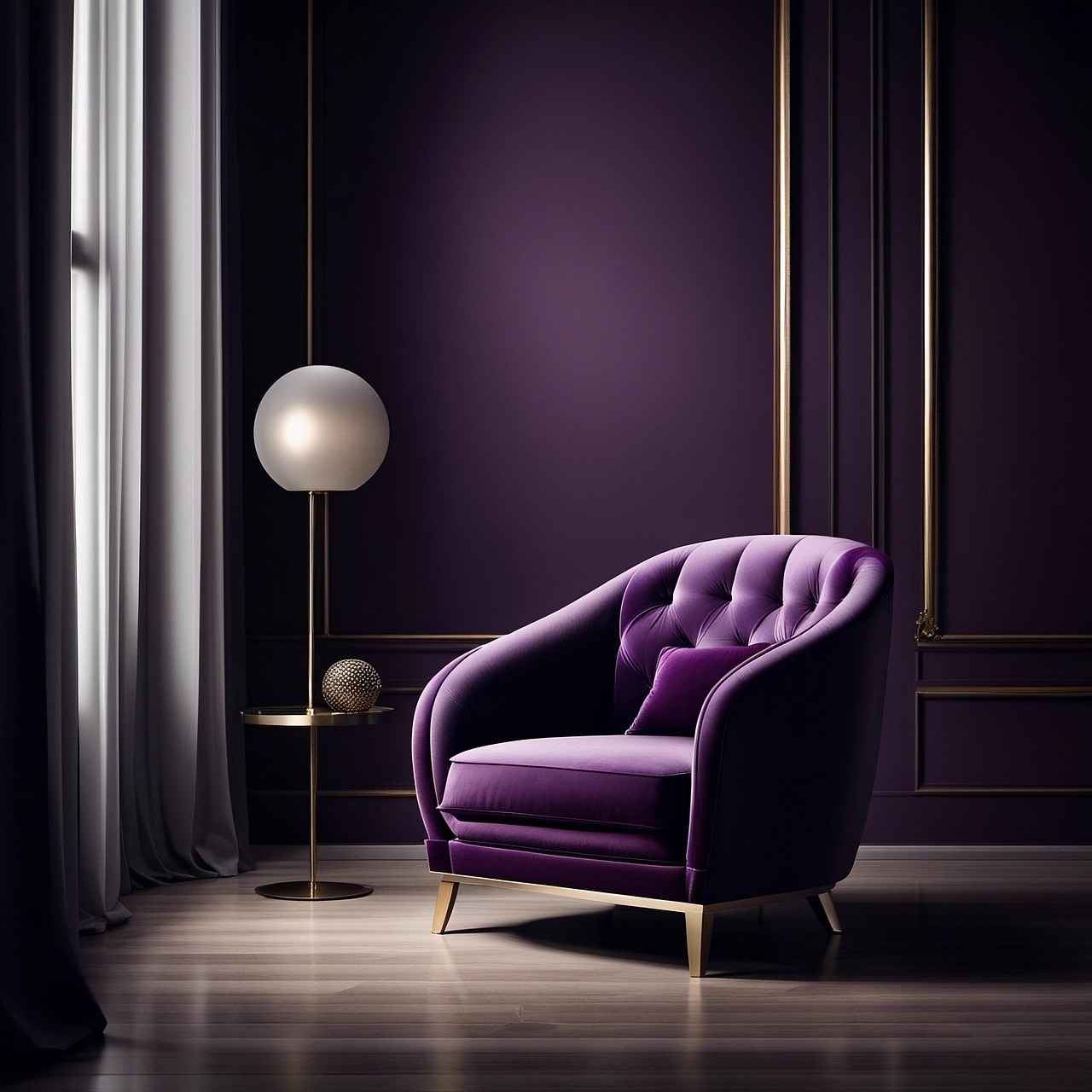
3. Creative Headboard Ideas to Enhance Your Bed Wall
Creative Headboard Ideas to Enhance Your Bed Wall
Headboards are not just functional elements; they can also serve as striking design features that redefine the aesthetics of your bedroom. By choosing the right headboard, you can create a focal point that elevates your entire space. In this section, we will explore various creative headboard ideas that can transform your bed wall into a stylish haven.
| Headboard Style | Description |
|---|---|
| Upholstered Headboards | Upholstered headboards offer comfort and a touch of elegance. They come in various fabrics and colors, allowing you to customize your bedroom decor. |
| Wooden Headboards | Wooden headboards provide a classic and timeless appeal. They can be stained or painted to match your bedroom’s color scheme. |
| Metal Headboards | Metal headboards can add a modern touch. They are available in various designs, from intricate patterns to sleek, minimalist styles. |
| DIY Headboards | Creating a DIY headboard can be a fun project. Use materials like reclaimed wood, fabric, or even old doors to craft a unique piece that reflects your personality. |
1. Upholstered Headboards
Upholstered headboards are a popular choice for those who seek comfort and style. They can be made from various fabrics, including velvet, linen, and faux leather. The softness of an upholstered headboard not only adds a cozy feel but also provides a luxurious touch to your bedroom. Choose bold colors or patterns to make a statement, or opt for neutral tones for a more subdued look.
2. Wooden Headboards
Wooden headboards are a timeless option that can complement various design styles, from rustic to contemporary. You can choose from different types of wood, such as oak, pine, or reclaimed wood, to create a unique look. Consider a headboard with built-in shelves or a slatted design for added functionality and visual interest.
3. Metal Headboards
For a more industrial or modern aesthetic, metal headboards are an excellent choice. They can be found in various finishes, including matte black, brushed nickel, and antique brass. Metal headboards are durable and easy to maintain, making them a practical option for busy lifestyles.
4. DIY Headboards
If you’re feeling creative, consider crafting your own DIY headboard. This option allows you to express your personal style and create a truly one-of-a-kind piece. Use materials like reclaimed wood to add character, or paint an old door for a vintage vibe. There are countless tutorials available online to guide you through the process, making it accessible for anyone.
5. Floating Headboards
For a modern twist, floating headboards can create an illusion of space and add a contemporary flair to your bedroom. These headboards are mounted directly to the wall, giving the appearance of floating above the bed. They can be made from various materials and can even incorporate built-in lighting for an added design element.
6. Canopy Headboards
Canopy headboards can add a touch of drama and elegance to your bedroom. By incorporating fabric draping from the ceiling, you can create a cozy and intimate atmosphere. This style works well in larger bedrooms, where the height can be utilized effectively.
Incorporating these creative headboard ideas into your bed wall design can significantly enhance your bedroom’s style and functionality. Choose a style that resonates with your personal aesthetic, and don’t hesitate to experiment with different materials and designs to create a space that feels uniquely yours.
3.1. DIY Headboard Projects
DIY headboard projects are an excellent way to infuse your personal style into your bedroom while enhancing the overall aesthetic. Creating your own headboard can be both a fun and rewarding experience, allowing you to showcase your creativity and resourcefulness. Whether you’re looking for something minimalist, rustic, or bold, there are numerous options to explore that can seamlessly fit into your decor.
Here are some exciting DIY headboard ideas to inspire your next project:
- Wood Pallet Headboard: Utilizing reclaimed wood pallets can create a rustic charm in your bedroom. Simply sand down the pallets, stain or paint them to your liking, and attach them to the wall behind your bed. This project is not only budget-friendly but also environmentally conscious.
- Fabric Upholstered Headboard: For a softer look, consider an upholstered headboard. You can use plywood as a base, add foam padding, and then wrap it in your favorite fabric. This option allows you to play with colors and textures, making it a versatile choice for any bedroom style.
- Painted Wood Headboard: If you prefer a more artistic approach, why not paint a design directly onto a piece of wood? You can create geometric patterns, stripes, or even a mural that reflects your personality. This project is perfect for those who enjoy painting and want to add a unique touch to their space.
- Tufted Headboard: A tufted headboard adds a touch of elegance to your bedroom. You can achieve this look by covering a piece of plywood with foam and fabric, then adding buttons to create the tufted effect. This sophisticated design can elevate any bedroom decor.
- Repurposed Door Headboard: An old door can serve as a stunning headboard. Sand it down, paint it, or leave it as is for a vintage look. This project not only gives your bedroom character but also makes for a great conversation piece.
When embarking on your DIY headboard project, consider the following tips:
- Measure Your Space: Before starting, measure the width of your bed and the height you want for your headboard. This will ensure that your creation fits perfectly in your bedroom.
- Choose Quality Materials: Invest in good quality materials that will withstand wear and tear. This is especially important for upholstered headboards, where durability is key.
- Follow Safety Guidelines: Always use proper safety gear when working with tools and materials. Make sure to follow instructions carefully, especially if you are using power tools.
In conclusion, creating a DIY headboard is an enjoyable project that can significantly enhance your bedroom’s decor. With a variety of styles and materials to choose from, you can create a headboard that reflects your personal taste and complements your overall design scheme. So gather your materials, unleash your creativity, and transform your bedroom into a stylish sanctuary!
3.2. Upholstered vs. Wooden Headboards
When it comes to designing your bedroom, the choice of headboard is crucial as it can set the tone for the entire space. Upholstered and wooden headboards each offer distinct advantages and aesthetics that cater to different styles and preferences. Understanding these differences can help you make an informed decision that enhances your bedroom decor.
- Comfort: Upholstered headboards provide a soft and cushioned surface, making them perfect for leaning back while reading or watching TV in bed.
- Variety of Fabrics: They come in a wide range of fabrics, colors, and patterns, allowing you to customize your headboard to match your bedroom’s theme.
- Sound Absorption: The fabric can help dampen noise, creating a quieter and more serene environment.
- Warmth and Texture: Upholstered headboards add warmth and texture to the room, making the space feel more inviting.
- Durability: Wooden headboards are known for their strength and longevity, often lasting for many years with proper care.
- Classic Aesthetic: They offer a timeless look that can complement various decor styles, from rustic to modern.
- Easy Maintenance: Wooden surfaces are generally easier to clean and maintain than fabric, making them a practical choice.
- Customization Options: Wood can be stained or painted to fit your desired color scheme, providing versatility in design.
The choice between upholstered and wooden headboards also boils down to personal style. Upholstered headboards can introduce a sense of luxury and softness, making them ideal for a cozy, inviting bedroom. On the other hand, wooden headboards contribute a sense of structure and stability, often serving as a striking focal point in a room.
When selecting a headboard, consider your existing decor. If you have a minimalist or modern aesthetic, a sleek wooden headboard may align better with your vision. Conversely, if your style leans towards bohemian or traditional, an upholstered headboard with intricate patterns could enhance the overall look.
Another factor to consider is the cost. Typically, upholstered headboards can be more expensive due to the materials and craftsmanship involved. However, there are budget-friendly options available in both categories. It’s essential to balance your budget with your aesthetic desires to find the right headboard that doesn’t compromise your overall decor.
Installation can vary between the two types. Upholstered headboards often come with mounting hardware, making them easier to install. Wooden headboards may require more effort depending on their design and weight. In terms of care, upholstered headboards may need occasional cleaning to remove dust and stains, while wooden headboards can be wiped down with a damp cloth to maintain their appearance.
Ultimately, the choice between upholstered and wooden headboards should reflect your personal taste, lifestyle, and the overall decor of your bedroom. By weighing the benefits, aesthetics, and practical considerations of each option, you can select a headboard that not only enhances your bedroom’s style but also provides comfort and functionality.
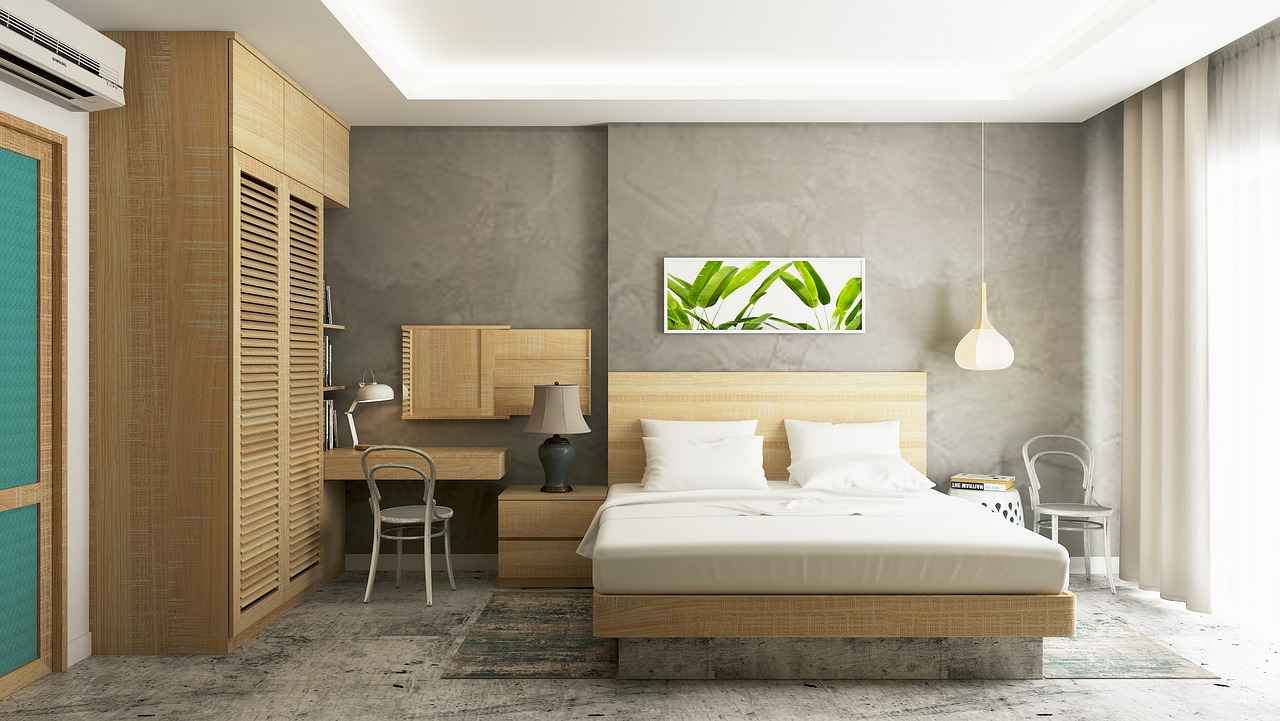
4. Incorporating Artwork Above the Bed
Incorporating artwork above the bed is a fantastic way to create a stunning focal point in your bedroom. Art has the unique ability to transform a simple wall into a vibrant expression of your personality and style. When selecting and arranging artwork, it’s essential to consider how it complements your overall bedroom decor, including color schemes, furniture styles, and personal tastes.
Artwork can evoke emotions and set the mood of your space. Whether you prefer abstract pieces, landscapes, or personal photographs, the right artwork can enhance the ambiance of your bedroom. Consider the following factors when choosing artwork:
- Color Harmony: Select pieces that incorporate colors found in your bedding or decor to create a cohesive look.
- Size and Scale: Large pieces can act as statement items, while smaller artworks can be arranged in clusters.
- Theme and Style: Choose art that reflects your personal style or a theme that resonates with you.
Once you’ve selected your artwork, the next step is to arrange it effectively. Here are some tips for creating a visually appealing arrangement:
- Gallery Wall: Create a gallery wall by combining various art pieces in different sizes and frames. This approach can showcase your personality through a curated collection.
- Symmetrical Arrangements: For a more traditional look, consider placing two or three pieces of similar size on either side of the bed, ensuring they are evenly spaced.
- Single Statement Piece: If you prefer a minimalist approach, opt for a large, bold artwork that draws the eye and serves as the focal point.
Artwork doesn’t have to be limited to paintings or prints. Consider incorporating various forms of art to add depth and interest to your bed wall:
- Framed Textiles: Tapestries or fabric art can add texture and warmth to your space.
- 3D Art: Sculptures or wall-mounted art can create a dynamic visual impact.
- Photography: Personal photographs can make your space feel more intimate and personal.
Proper lighting can enhance the beauty of your artwork. Consider these lighting options:
- Picture Lights: Install picture lights above your artwork to highlight its features.
- Wall Sconces: Use sconces on either side of the artwork to create a dramatic effect.
- Natural Light: Position artwork where it can benefit from natural light, but avoid direct sunlight to prevent fading.
Changing your artwork with the seasons can keep your bedroom feeling fresh and inviting. Consider swapping out pieces to reflect seasonal themes or colors, such as:
- Spring: Light, floral artwork to evoke a sense of renewal.
- Summer: Bright, vibrant pieces that capture the essence of summer.
- Autumn: Warm, earthy tones that reflect the changing leaves.
- Winter: Cozy, serene artwork that creates a peaceful atmosphere.
By thoughtfully selecting and arranging artwork above your bed, you can create a captivating focal point that enhances your bedroom decor and reflects your unique style. Whether you prefer a bold statement piece or a curated gallery wall, the right artwork can transform your space into a personal sanctuary.
4.1. Gallery Wall Inspiration
Creating a gallery wall above your bed is an excellent way to showcase your personality and express your unique style. This design element not only adds visual interest to your bedroom but also serves as a personal narrative, telling the story of your life through art and photographs. Below are some inspiring ideas to help you curate a stunning collection that reflects who you are.
- Choose a Theme: Start by selecting a theme that resonates with you. Whether it’s travel memories, family portraits, or abstract art, a cohesive theme can create a harmonious look.
- Mix and Match: Don’t be afraid to mix different styles and mediums. Combine paintings, photographs, and prints to create an eclectic gallery that captures various aspects of your personality.
- Frame Selection: The choice of frames can dramatically alter the gallery’s impact. Consider using a variety of frame styles and colors to add depth and interest. Alternatively, a uniform frame style can create a more streamlined and sophisticated look.
- Layout Planning: Before hanging your pieces, lay them out on the floor to experiment with different arrangements. Popular layouts include grid patterns, salon-style clusters, or asymmetrical designs. Ensure to maintain balance and visual flow.
When it comes to hanging your gallery wall, consider the following tips:
- Eye Level Placement: Hang your artwork at eye level for the best viewing experience. This is typically around 57 to 60 inches from the floor.
- Spacing: Maintain consistent spacing between pieces, generally 2 to 5 inches apart, to create a unified look.
- Use a Level: To ensure that your frames are straight, use a level during installation. This small step can make a significant difference in the overall appearance of your gallery wall.
Incorporating personal elements, such as handwritten notes or mementos, can further enhance the storytelling aspect of your gallery wall. Consider including:
- Postcards: Travel postcards can evoke memories of your adventures.
- Quotes: Inspirational quotes framed alongside your artwork can provide motivation and positivity.
- Artistic Collaborations: Collaborate with friends or family to create pieces that represent your shared experiences.
Finally, remember that your gallery wall is not static. Feel free to update it with new pieces over time as your tastes evolve or as you acquire new memories. This adaptability will keep your space feeling fresh and relevant.
In summary, a gallery wall above your bed can serve as a beautiful and meaningful focal point in your bedroom. By carefully curating your collection and considering layout, frame selection, and personal touches, you can create a stunning display that truly reflects your unique story.
4.2. Large-Scale Artwork for Dramatic Impact
When it comes to bedroom decor, large-scale artwork can serve as a transformative element, making a bold statement that captures attention and sets the mood of the space. The right oversized piece can create a focal point that draws the eye and adds a sense of drama to your bedroom. Here are some essential tips for selecting and positioning large-scale artwork to achieve maximum impact.
- Choosing the Right Piece: Start by selecting artwork that resonates with your personal style and complements the overall decor of your bedroom. Consider the theme and color palette of your room. For instance, if your bedroom features soft, muted tones, a vibrant piece can add a pop of color and energy.
- Size Matters: When it comes to large-scale artwork, size is critical. An oversized piece should ideally occupy a significant portion of the wall space above your bed or dresser. This creates a visual anchor and prevents the artwork from feeling lost in the room. A good rule of thumb is to choose a piece that is at least two-thirds the width of the furniture it is above.
- Framing and Presentation: The way you frame your artwork can enhance its impact. A simple, sleek frame can lend a modern touch, while a more ornate frame can add a classic feel. Consider using a gallery-style presentation with multiple pieces that complement each other, arranged in a cohesive layout.
- Placement and Height: Positioning your artwork correctly is essential for achieving the desired effect. Hang the piece at eye level, typically around 57 to 60 inches from the floor to the center of the artwork. This height allows for comfortable viewing and creates a balanced look in the room.
- Lighting Considerations: Proper lighting can significantly enhance the visual appeal of large-scale artwork. Use wall sconces or track lighting to highlight the piece, creating depth and dimension. Avoid harsh overhead lighting that can cast unflattering shadows.
Incorporating large-scale artwork into your bedroom decor not only elevates the aesthetic but also reflects your personality and taste. Whether you opt for a striking abstract piece, a serene landscape, or a vibrant portrait, the key is to ensure that it resonates with you and enhances the overall ambiance of your space. Remember, the right artwork can transform your bedroom into a personal sanctuary, making it a place where you can unwind and feel inspired.
As you embark on your journey to find the perfect large-scale artwork, keep these tips in mind to create a stunning visual impact that will leave a lasting impression.

5. Lighting Solutions for Bed Wall Design
Effective lighting can dramatically enhance the beauty of your bed wall, transforming it into a captivating focal point in your bedroom. The right lighting not only illuminates your space but also creates a desired ambiance, highlighting design features and adding depth to your decor. In this section, we will explore various lighting solutions that can elevate your bed wall design, making it both functional and aesthetically pleasing.
Wall sconces are an excellent choice for adding both illumination and style to your bed wall. These fixtures can be mounted at various heights, providing targeted lighting that complements your decor. When selecting sconces, consider the following:
- Style: Choose sconces that match your bedroom’s overall design theme, whether it’s modern, rustic, or traditional.
- Placement: Position sconces on either side of the bed to create a balanced look and provide ample light for reading or relaxing.
- Dimmer Switches: Incorporating dimmer switches allows you to adjust the brightness, enhancing the mood of the room.
String lights are a versatile and whimsical option for adding a cozy feel to your bed wall. They can be draped, hung, or wrapped around various elements to create a magical ambiance. Here are some creative ways to incorporate string lights:
- Canopy Effect: Drape string lights above your bed to create a dreamy canopy effect that softens the space.
- Artistic Arrangements: Arrange lights in a unique pattern or shape, such as a heart or star, to reflect your personality.
- Seasonal Decor: Change the colors and styles of string lights with the seasons to keep your decor fresh and inviting.
Recessed lighting is an excellent option for those seeking a minimalist approach. These lights are installed into the ceiling, providing a clean and unobtrusive look. They can be used to highlight specific areas of your bed wall, such as:
- Artwork: Direct recessed lights towards artwork or photographs to draw attention and add drama.
- Textured Walls: Use recessed lighting to accentuate textured wall treatments, creating depth and interest.
LED strip lights are a popular choice for modern bedroom designs. They are flexible, energy-efficient, and can be installed in various locations. Consider these ideas for using LED strip lights:
- Under Bed Lighting: Install LED strips under the bed frame to create a floating effect and add a touch of elegance.
- Behind Headboards: Adding LED strips behind headboards can create a soft glow that enhances the overall design.
- Color Changing Options: Many LED strips come with color-changing features, allowing you to customize the mood based on your preferences.
Table lamps can serve as both a decorative element and a source of light. Placing lamps on bedside tables not only provides adequate lighting for reading but also adds a personal touch. When selecting table lamps, keep in mind:
- Height: Choose lamps that are proportional to your bedside tables and bed height for a balanced look.
- Shade Material: The material of the lampshade can affect the quality of light; consider fabric shades for a softer glow.
In conclusion, effective lighting is crucial for enhancing your bed wall design. By exploring various lighting solutions such as wall sconces, string lights, recessed lighting, LED strips, and table lamps, you can create an inviting and stylish atmosphere that reflects your personal taste. The right lighting not only highlights design features but also sets the mood for relaxation and comfort in your bedroom.
5.1. Wall Sconces: Functional and Stylish
In the realm of bedroom design, wall sconces are not just functional lighting fixtures; they are also essential components that can significantly enhance the overall aesthetic of your space. These versatile lighting options provide both illumination and style, making them a perfect addition to your bed wall design. In this section, we will explore how to choose and position sconces effectively to complement your bedroom decor.
Wall sconces are a fantastic way to create ambient lighting in your bedroom. Unlike overhead lights, sconces can be strategically placed to highlight specific areas, such as artwork or decorative features, while also providing soft, inviting light. They can serve as a focal point or simply blend into the background, depending on your design goals.
- Contemporary Designs: If your bedroom features modern decor, consider sleek, minimalist sconces with clean lines and metallic finishes.
- Vintage or Rustic Styles: For a more traditional look, opt for sconces made from wrought iron or with antique finishes to add character.
- Artistic Options: Unique, artistic sconces can serve as statement pieces, contributing to the overall theme of your room.
Placement is crucial when it comes to sconces. Here are some tips to ensure they enhance your bed wall:
- Height Matters: Install sconces at eye level for the best effect, typically around 60 to 66 inches from the floor. This height allows for optimal illumination and visibility.
- Flanking the Bed: Placing sconces on either side of the bed can create a balanced look while providing functional lighting for reading or relaxing.
- Highlighting Artwork: If you have artwork above your bed, position sconces to direct light onto the piece, creating a gallery-like effect.
The type of bulb you choose can greatly affect the mood of your bedroom. Consider using warm white LED bulbs for a cozy atmosphere or dimmer switches to adjust the brightness according to your needs. This flexibility allows you to create a soothing environment for relaxation or a brighter space for activities.
To achieve a well-lit and inviting bedroom, combine wall sconces with other lighting sources:
- Table Lamps: Pair sconces with bedside lamps for layered lighting that enhances functionality.
- Overhead Fixtures: Use ceiling lights for general illumination, while sconces provide targeted light.
- Accent Lighting: Incorporate LED strip lights or fairy lights for a whimsical touch that complements your sconces.
In conclusion, wall sconces are an excellent way to enhance your bedroom’s design while providing practical lighting solutions. By carefully selecting the style, positioning, and combination of lighting sources, you can create a space that is both functional and stylish. Whether you prefer contemporary chic or rustic charm, sconces can elevate your bed wall design to new heights.
5.2. String Lights for a Cozy Atmosphere
String lights have become a popular choice for enhancing the ambiance of various spaces, particularly in bedrooms. Their soft glow can create a cozy atmosphere that transforms a simple room into a serene sanctuary. In this section, we will explore creative ways to incorporate string lights into your bed wall design, ensuring a perfect blend of style and comfort.
One of the most effective methods of using string lights is to drape them along the headboard. This technique not only adds visual interest but also creates a warm glow that enhances the overall aesthetic of the bed area. Consider using a combination of clear and colored lights to achieve a unique effect. By wrapping the lights around the headboard or allowing them to cascade down the wall, you can create a dreamy, whimsical look that invites relaxation.
Another innovative idea is to create a lighted backdrop for your bed. Hang string lights in a pattern or shape that complements your bedroom decor. For instance, a heart shape or a starry night theme can add a personal touch to your space. This setup can serve as a stunning focal point, especially when paired with soft bedding and decorative pillows that harmonize with the light’s colors.
Additionally, consider incorporating string lights into wall art or photo displays. By intertwining lights with framed photos or artwork, you can create a dynamic gallery wall that not only showcases your memories but also adds depth and dimension to the room. This approach allows for a creative expression of your personality while maintaining a cozy atmosphere.
For those who prefer a more understated look, consider using string lights in jars or lanterns. This technique adds a rustic charm to your bedroom decor. Place the jars or lanterns on shelves or bedside tables to create an inviting glow that enhances the coziness of the space. This method is particularly effective in smaller rooms, where the soft light can make the area feel more spacious and welcoming.
It’s also worth exploring the use of remote-controlled string lights. These offer convenience, allowing you to adjust brightness and set timers without getting out of bed. This feature is particularly beneficial for creating the perfect ambiance for different activities, whether you’re winding down with a book or enjoying a romantic evening.
Lastly, don’t overlook the potential of layering string lights with other lighting sources. Combining string lights with bedside lamps or wall sconces can create a multi-dimensional lighting scheme that enhances the comfort of your bedroom. This layered approach not only adds depth but also allows for adjustable lighting options depending on your mood or activity.
In summary, string lights are a versatile and charming addition to any bedroom decor. By exploring various creative ways to incorporate them into your bed wall design, you can achieve a cozy and inviting atmosphere that reflects your personal style. Whether you choose to drape them, create a backdrop, or integrate them into existing decor, string lights can significantly enhance the overall ambiance of your sanctuary.

6. Utilizing Shelving for Practical Decor
Utilizing Shelving for Practical Decor
Shelving is not merely a storage solution; it can also serve as a decorative feature that enhances the overall aesthetic of your bedroom. By strategically incorporating shelves into your bed wall design, you can create a space that is both functional and visually appealing. This section explores various ways to utilize shelving to display books, plants, and personal items, transforming your bed wall into a personalized gallery.
1. The Versatility of Shelves
Shelves come in various styles, materials, and sizes, making them incredibly versatile. Whether you prefer a minimalist approach with floating shelves or a more traditional look with sturdy bookcases, there are endless options to fit your design preferences. Here are some ideas to consider:
- Floating Shelves: These shelves create a sleek, modern look and can be installed at various heights to display items like books, framed photos, or decorative objects. They can also be painted to match your wall color for a seamless appearance.
- Corner Shelves: If space is limited, corner shelves can utilize often-overlooked areas. They can be perfect for small plants or knick-knacks, adding charm without taking up valuable floor space.
- Built-In Shelving: For a custom look, built-in shelves can be designed to fit your specific space. This option allows for more storage and can be integrated with other design elements, such as lighting.
2. Displaying Books and Literature
Books can be more than just reading material; they can serve as beautiful decor when displayed properly. Consider the following tips:
- Color Coordination: Arrange your books by color to create a visually striking display. This method can add a pop of color to your bed wall and create a cohesive look.
- Mixing Sizes: Use a combination of large coffee table books and smaller novels to create depth. Stack some books horizontally and others vertically for added interest.
- Incorporating Bookends: Decorative bookends can enhance the aesthetic of your shelf while keeping your books organized. Choose bookends that reflect your personal style, whether they are modern, vintage, or artistic.
3. Adding Greenery with Plants
Incorporating plants into your shelving can bring a touch of nature indoors. Here are a few ideas for integrating greenery:
- Succulents and Cacti: These low-maintenance plants are perfect for shelves because they require minimal care and can thrive in various lighting conditions.
- Hanging Plants: Consider using shelves to hang trailing plants, creating a beautiful cascading effect. This can add dimension and a lively touch to your bed wall.
- Plant Stands: If you have larger plants, use decorative plant stands on your shelves to elevate them, creating a layered look that draws the eye upward.
4. Showcasing Personal Items
Your shelves can also serve as a canvas for your personality. Displaying personal items can make your space feel more inviting. Here are some suggestions:
- Framed Photos: Showcase family photos or cherished memories in decorative frames. Mixing frame styles can create an eclectic look that adds character.
- Travel Souvenirs: Display items collected from your travels to tell your story. These unique pieces can spark conversation and add a personal touch.
- Artistic Objects: Consider incorporating sculptures, vases, or other artistic objects that resonate with your style. These items can serve as focal points on your shelves.
5. Lighting for Shelving
Proper lighting can enhance the beauty of your shelves and the items displayed on them. Consider the following options:
- LED Strip Lights: Installing LED strip lights under shelves can create a soft glow, highlighting your decor while adding ambiance to your bedroom.
- Spotlights: Use small spotlights to draw attention to specific items, such as artwork or unique collectibles. This technique can create a gallery-like atmosphere.
In summary, utilizing shelving on your bed wall can significantly enhance both the functionality and aesthetics of your bedroom. By carefully selecting and arranging shelves, you can create a space that reflects your personal style while providing practical storage solutions. Whether displaying books, plants, or cherished items, the right shelving can transform your bedroom into a stylish sanctuary.
6.1. Floating Shelves for a Modern Look
Floating shelves have become an essential element in modern interior design, particularly in bedrooms. Their sleek and contemporary design not only maximizes vertical space but also adds a stylish touch to your bed wall. In this section, we will explore how to install and style floating shelves effectively, transforming your bedroom into a chic sanctuary.
When considering floating shelves, the first step is to determine the ideal location. Above the bed is a popular choice, as it draws the eye upward and creates an illusion of space. However, it’s crucial to ensure that the shelves are installed at a height that is both visually appealing and functional. Typically, a height of 18 to 24 inches above the bed works well, allowing for decorative items without overwhelming the space.
Installation is a straightforward process, but it requires precision. Here’s a simple guide:
- Choose Your Shelves: Select shelves that complement your bedroom decor. Options range from wood to metal, each offering a different aesthetic.
- Gather Tools: You will need a level, drill, screws, and brackets. Make sure to choose brackets that can support the weight of your intended items.
- Find Studs: Use a stud finder to locate wall studs for secure installation. If studs are not available, consider using wall anchors.
- Mark and Drill: Mark the desired height and drill holes for the brackets. Ensure everything is level before securing the brackets.
- Attach Shelves: Once the brackets are in place, carefully place the shelves on top and secure them.
Once installed, it’s time to style your floating shelves. Here are some tips to enhance their visual appeal:
- Layer Your Decor: Use a mix of decorative items, such as books, plants, and personal mementos. Layering creates depth and interest.
- Vary Heights: Arrange items at different heights to avoid a monotonous look. Use books to elevate smaller items or incorporate decorative boxes.
- Incorporate Lighting: Consider adding LED strip lights beneath the shelves to create a soft glow, enhancing the ambiance of your bedroom.
- Seasonal Decor: Change the items on your shelves with the seasons to keep the decor fresh and engaging.
Floating shelves can also serve a practical purpose in your bedroom. Use them to display books, photos, or even small plants. This not only keeps your space organized but also adds a personal touch, making your bedroom feel uniquely yours.
In conclusion, floating shelves are a versatile and stylish addition to any bedroom. By following the installation guidelines and styling tips outlined above, you can create a modern look that enhances your bed wall while reflecting your personal style. Whether you choose to display cherished items or simply use them for decorative purposes, floating shelves can significantly elevate your bedroom decor.
6.2. Built-In Shelving Solutions
Built-in shelving solutions are an excellent way to maximize space and provide a custom look in your bedroom. These shelving units can be tailored to fit your specific needs and style, making them a perfect addition to any decor. Whether you have a small bedroom or a spacious master suite, built-in shelves can enhance functionality while adding aesthetic appeal.
One of the primary advantages of built-in shelving is its ability to integrate seamlessly with your bedroom decor. Unlike traditional shelving units that can feel bulky and out of place, built-in options can be designed to match your existing color scheme and style. This creates a cohesive look that enhances the overall ambiance of the room.
Here are some ideas for creating built-in shelves that can elevate your bedroom decor:
- Corner Shelves: Utilize corners to create unique shelving units that maximize space. Corner shelves can be designed to follow the shape of the room while providing ample storage for books, decor, and personal items.
- Bedside Built-Ins: Consider adding built-in shelves on either side of your bed. This not only provides easy access to books and lamps but also creates a symmetrical look that enhances the overall design.
- Integrated Lighting: Incorporate lighting into your built-in shelving to highlight your favorite decor pieces. LED strip lights or recessed lighting can add a warm glow that enhances the room’s atmosphere.
- Display and Storage: Combine open shelves for display with closed cabinets for storage. This approach allows you to showcase decorative items while keeping clutter out of sight.
- Customizable Sizes: Built-in shelves can be designed in various sizes and heights to suit your needs. Whether you need a tall unit for books or shorter shelves for decor, customization is key.
When planning your built-in shelving, consider the following:
- Materials: Choose materials that complement your bedroom decor. Wood, laminate, or even metal can provide different aesthetics depending on your style.
- Color Coordination: Match the color of your shelves with the walls or furniture to create a unified look. Alternatively, a contrasting color can make the shelves a focal point.
- Functionality: Think about what you intend to store on the shelves. This will help determine the depth and height of each shelf.
Incorporating built-in shelving into your bedroom not only increases storage space but also enhances the room’s overall design. By carefully considering the layout, materials, and style, you can create a functional and visually appealing shelving solution that fits your unique needs.
Ultimately, built-in shelving is more than just a practical solution; it’s an opportunity to express your style and create a personalized sanctuary. Whether you prefer a minimalist approach or a more eclectic design, built-in shelves can adapt to your vision, making your bedroom a true reflection of you.

7. Plant Decor: Bringing Nature Indoors
Incorporating plants into your bed wall design can significantly enhance the room’s atmosphere, creating a serene and rejuvenating environment. Not only do plants add a touch of nature, but they also improve air quality and contribute to overall well-being. This section will explore the best plants for bedroom decor and innovative ways to arrange them creatively.
When selecting plants for your bedroom, consider factors such as light availability, maintenance requirements, and personal preferences. Here are some popular options:
- Snake Plant: Known for its air-purifying qualities, the snake plant thrives in low light and requires minimal watering.
- Pothos: This hardy plant is perfect for beginners. Its trailing vines can be placed in hanging planters or on shelves.
- Peace Lily: With its elegant white blooms, the peace lily not only beautifies the space but also helps filter toxins from the air.
- Spider Plant: This resilient plant produces “baby” plants that can be propagated easily, making it a fun addition to your decor.
- ZZ Plant: With its glossy leaves, the ZZ plant is virtually indestructible and can thrive in low light conditions.
Once you have selected your plants, the next step is to arrange them creatively. Here are some inspiring ideas:
- Vertical Gardens: Create a stunning vertical garden by mounting a series of small planters on your bed wall. This not only saves space but also creates a lush backdrop.
- Hanging Planters: Utilize ceiling hooks to suspend plants at varying heights. This adds dimension and draws the eye upward, making the room feel larger.
- Floating Shelves: Install floating shelves above your bed to showcase a collection of plants. Mix different heights and textures for visual interest.
- Wall-mounted Planters: Opt for wall-mounted planters that can hold multiple plants. This allows for a creative arrangement that can be easily changed as needed.
- Cluster Arrangements: Group smaller pots together on a bedside table or dresser. This creates a mini garden effect and can be easily rearranged.
To ensure your plants thrive in the bedroom, consider the following maintenance tips:
- Watering: Be mindful of each plant’s watering needs. Overwatering is a common mistake, so check the soil moisture before watering.
- Light Exposure: Position plants according to their light requirements. Some may thrive in bright, indirect light, while others prefer low light.
- Dusting Leaves: Regularly wipe the leaves to remove dust, allowing the plants to breathe and photosynthesize effectively.
- Fertilizing: Use a balanced fertilizer during the growing season to promote healthy growth.
By incorporating plants into your bed wall design, you not only enhance the aesthetic appeal of your bedroom but also create a calming sanctuary that promotes relaxation and well-being. Embrace the beauty of nature indoors and enjoy the transformative power of plant decor.
7.1. Vertical Gardens for a Lush Feel
Vertical gardens are an innovative way to bring nature into your home, transforming any wall into a vibrant, living space. They not only save floor space but also serve as a stunning focal point, especially when placed above your bed. If you’re looking to create a lush atmosphere in your bedroom, here’s how to design and maintain a vertical garden that enhances your decor.
When designing a vertical garden, consider the following key elements:
- Location: Choose a wall that receives adequate sunlight. If natural light is limited, consider using grow lights to ensure your plants thrive.
- Plant Selection: Opt for plants that are suitable for indoor environments. Some excellent choices include ferns, succulents, and herbs. These plants not only look beautiful but also improve air quality.
- Vertical Garden Systems: There are various systems available, from wall-mounted planters to pocket systems and hydroponic setups. Choose one that fits your style and space.
To maintain your vertical garden, follow these practical tips:
- Watering: Ensure that your plants receive the right amount of water. A drip irrigation system can help automate this process, ensuring consistent moisture without overwatering.
- Fertilization: Use a balanced, water-soluble fertilizer to provide essential nutrients. Fertilize every few weeks during the growing season for optimal growth.
- Pruning: Regularly prune your plants to encourage healthy growth and prevent overcrowding. This will also help maintain the aesthetic appeal of your vertical garden.
Incorporating a vertical garden above your bed not only adds a unique design element but also promotes a sense of tranquility and well-being. The presence of greenery can reduce stress and create a calming atmosphere, making your bedroom a sanctuary. Additionally, vertical gardens can serve as a natural air purifier, enhancing the overall quality of your indoor environment.
Consider adding decorative elements such as hanging lights or framed art around your vertical garden to create a cohesive look. This can further enhance the visual impact of your bedroom decor and make your vertical garden a true centerpiece.
In summary, a vertical garden is a fantastic way to elevate your bedroom decor while saving space. With careful planning and maintenance, you can create a stunning, lush wall that not only looks great but also contributes to a healthier living environment.
7.2. Hanging Planters for a Unique Touch
Hanging planters can truly transform your bed wall into a lively and inviting space. They not only add a touch of greenery but also create a sense of depth and dimension that can enhance the overall aesthetic of your bedroom. In this section, we will explore how to select and arrange hanging plants to achieve a vibrant and unique look.
Choosing the Right Plants
When selecting hanging plants, it’s essential to consider their light requirements, growth habits, and aesthetic appeal. Here are some popular options:
- Pothos: Known for its trailing vines, pothos is low-maintenance and thrives in various light conditions.
- String of Pearls: This succulent features unique bead-like leaves and adds a whimsical touch to any space.
- Spider Plant: With its arching leaves and baby plantlets, spider plants are perfect for creating a lush hanging display.
- Ferns: Ferns, particularly Boston ferns, offer a soft, feathery texture that can soften the look of your bed wall.
Arranging Your Hanging Planters
Once you’ve selected your plants, the next step is to arrange them effectively. Here are some tips to help you create an eye-catching display:
- Vary Heights: Hang planters at different heights to create visual interest. This layering effect draws the eye upward and makes the wall feel more dynamic.
- Mix Textures: Combine different types of plants to create a rich tapestry of textures. Pair trailing plants with bushier varieties for a balanced look.
- Use Decorative Pots: Choose pots that complement your bedroom decor. Consider materials like ceramic, macrame, or even metal for added style.
- Group Plants: Grouping plants together can create a mini-garden effect. Use clusters of three or five for a more cohesive look.
Maintenance Tips
To keep your hanging plants thriving, consider the following maintenance tips:
- Watering: Ensure proper drainage and avoid overwatering. Check the soil moisture regularly.
- Light Conditions: Place your hanging planters where they can receive adequate light, adjusting their position as necessary.
- Fertilizing: Use a balanced fertilizer every few months to promote healthy growth.
Incorporating hanging planters into your bed wall design not only enhances the visual appeal of your space but also brings a sense of tranquility and connection to nature. By carefully selecting and arranging your plants, you can create a stunning focal point that reflects your personal style.
Whether you prefer a minimalist approach with a few select plants or a lush, cascading display, hanging planters can be tailored to suit any aesthetic. Embrace the beauty of nature in your bedroom and enjoy the refreshing atmosphere that hanging plants provide.
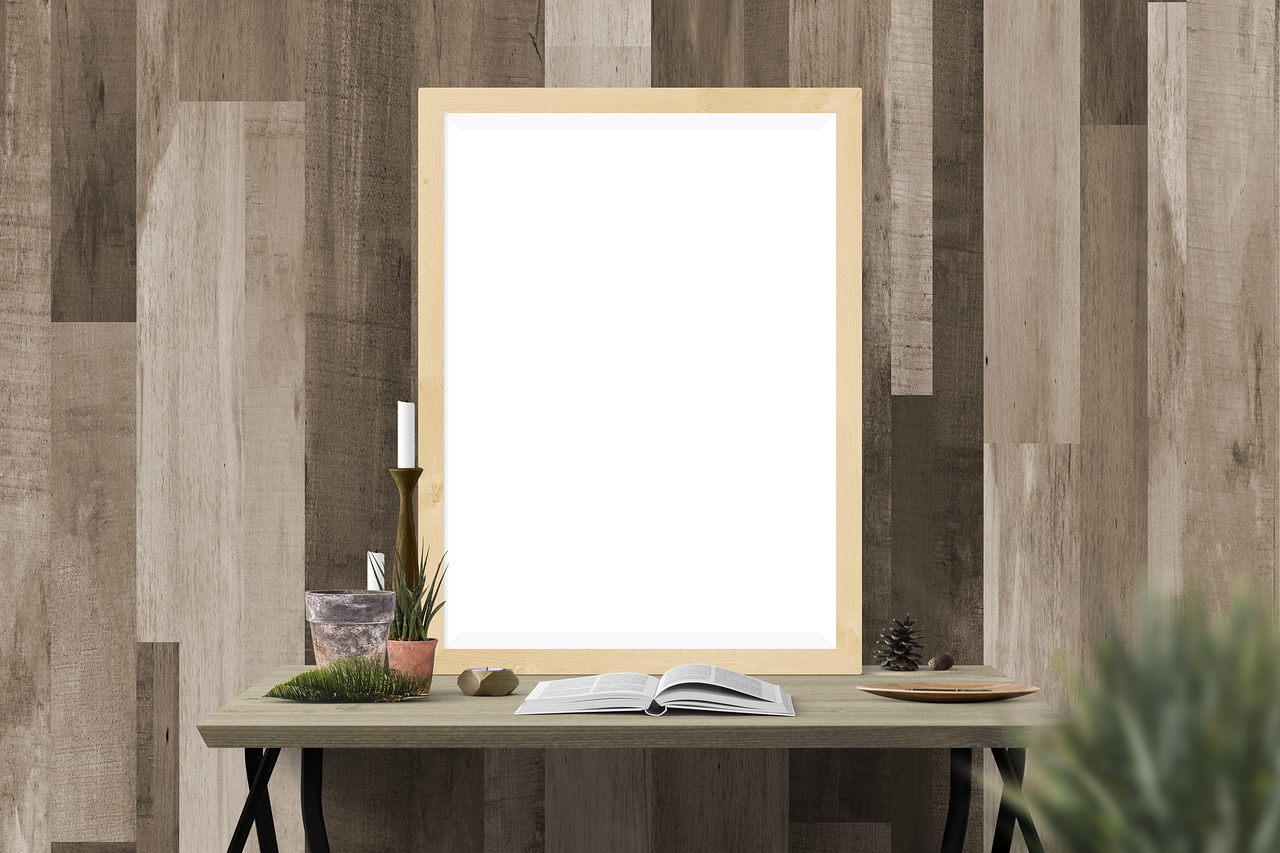
8. Mirrors: Enhancing Light and Space
Mirrors are not just functional items; they are powerful design tools that can dramatically alter the perception of space in a small bedroom. When utilized effectively, mirrors can create an illusion of depth and brightness, making your bedroom feel more expansive and inviting. This section delves into the art of using mirrors as a design element, particularly on your bed wall, to maximize their impact.
Mirrors serve several purposes in interior design. Their reflective surfaces can:
- Amplify Natural Light: By strategically placing mirrors opposite windows, you can capture and reflect sunlight, enhancing the brightness of your space.
- Create Illusions of Space: Mirrors can make a small bedroom appear larger by reflecting the room’s dimensions, tricking the eye into perceiving more space.
- Add Visual Interest: A well-placed mirror can serve as a focal point, drawing attention and adding elegance to your decor.
To achieve maximum effect, consider these strategies for placing mirrors on your bed wall:
- Center Stage: Position a large mirror directly above the bed to create a stunning centerpiece. This not only reflects light but also adds height to the room.
- Gallery Style: Arrange a series of smaller mirrors in an artistic layout above the bed. This can create a gallery wall effect, adding personality and charm.
- Framed Elegance: Choose mirrors with decorative frames that complement your bedroom decor. A vintage or ornate frame can add a touch of sophistication.
The style of the mirror is just as important as its placement. Here are some popular options:
- Round Mirrors: These can soften the angular lines of a bedroom, creating a more inviting atmosphere.
- Full-Length Mirrors: Ideal for functionality, these mirrors can be placed on the wall or leaned against it for a casual look, allowing for outfit checks while enhancing the sense of space.
- Decorative Mirrors: Mirrors with unique shapes or artistic designs can act as standalone art pieces, adding character to your bed wall.
To further amplify the effect of mirrors, consider integrating lighting:
- Backlit Mirrors: These can create a soft glow, enhancing the ambiance while also serving as a nightlight.
- Wall Sconces: Positioning sconces on either side of a mirror can frame it beautifully, adding warmth and depth to the overall design.
In conclusion, mirrors are an essential element in bedroom design, especially for small spaces. By understanding their benefits and employing strategic placement, you can transform your bed wall into a stunning focal point that enhances both light and space. Whether you choose a single statement piece or a collection of mirrors, the right choices can create a visually appealing and inviting atmosphere in your bedroom.
8.1. Statement Mirrors as Focal Points
When it comes to enhancing the aesthetic appeal of your bedroom, a statement mirror can serve as a stunning centerpiece. Not only does it reflect light and create the illusion of space, but it also adds a touch of elegance and sophistication to your decor. Below are some essential tips for choosing and positioning a statement mirror above your bed, ensuring it becomes a focal point in your bedroom design.
- Choose the Right Size: The size of your mirror should be proportionate to your bed and the wall space above it. A large mirror can dominate the wall and create a dramatic effect, while a smaller mirror can add subtle charm. Consider a mirror that is at least two-thirds the width of your bed for a balanced look.
- Frame Style Matters: The frame of the mirror can significantly impact the overall style of your bedroom. Opt for a frame that complements your existing decor—whether it’s a sleek modern finish, ornate vintage design, or rustic wood. A well-chosen frame can enhance the mirror’s role as a statement piece.
- Reflecting Light: Position your mirror to capture natural light from windows. This not only brightens your room but also creates a warm and inviting atmosphere. Mirrors can reflect light beautifully, making your bedroom feel more spacious and airy.
- Height and Placement: Ideally, the center of the mirror should be at eye level. This ensures that it is functional as well as decorative. Hang the mirror approximately 5 to 10 inches above the headboard for a cohesive look. If your bed is taller or you have a high headboard, adjust the height accordingly.
- Layering with Decor: To enhance the visual impact of your statement mirror, consider layering it with other decorative elements. You can place sconces on either side for added light, or incorporate artwork and plants to create a curated gallery feel. This layering adds depth and character to the space.
- Style Cohesion: Ensure that the mirror’s style aligns with the overall theme of your bedroom. Whether your decor is minimalist, bohemian, or traditional, the mirror should harmonize with the color palette and furnishings to maintain a cohesive look.
In addition to these tips, consider the mirror’s shape. Round mirrors can soften the angular lines of a room, while rectangular mirrors can create a more structured look. Experimenting with different shapes can yield unique results and enhance the overall design of your bedroom.
Lastly, don’t forget the importance of maintenance. Regularly clean your mirror to keep it sparkling and free from dust and smudges. A well-maintained mirror not only looks great but also reflects your personal style and attention to detail.
In summary, a statement mirror above your bed can transform your bedroom into a stylish sanctuary. By carefully selecting the size, style, and placement of your mirror, you can create a stunning focal point that elevates your decor and enhances the overall ambiance of your space.
8.2. Mirrored Furniture for a Glamorous Touch
Incorporating mirrored furniture into your bedroom can significantly elevate your decor, creating a sense of glamour and sophistication. These reflective pieces not only enhance the aesthetic appeal of your space but also serve practical purposes, such as making a room feel larger and brighter. Here, we explore how to effectively use mirrored furniture to complement your bed wall design.
Mirrored furniture comes in various forms, including dressers,
| Mirrored Furniture Type | Style Tips |
|---|---|
| Dresser | Choose a dresser with geometric patterns for a contemporary feel. |
| Nightstand | Pair mirrored nightstands with bold lamps to create a striking contrast. |
| Headboard | Consider a tufted mirrored headboard for a luxurious touch. |
When positioning mirrored furniture, think about light and reflection. Place mirrors opposite windows to maximize natural light and create a bright, airy environment. Additionally, consider the layout of your room. Mirrored pieces can act as focal points, drawing attention to your bed wall. For instance, a large mirrored dresser can serve as a stunning backdrop when arranged thoughtfully with decorative items like vases or artwork.
- Layering Textures: Combine mirrored furniture with soft textiles like plush throws or velvet cushions to create a balanced look.
- Accent Colors: Use accents of color in your bedding or wall art to complement the reflective surfaces, adding depth to your decor.
- Artwork Integration: Hang artwork above your mirrored pieces to create visual interest and enhance the overall design.
Another effective strategy is to use mirrored furniture to create a cohesive design throughout your bedroom. For example, if you have a mirrored nightstand, consider incorporating other reflective elements, such as a mirrored lamp or decorative trays. This repetition can tie the room together, creating a harmonious and inviting atmosphere.
While mirrored furniture adds glamour, it’s essential to maintain balance in your decor. Avoid overcrowding your bedroom with too many reflective surfaces, as this can lead to a chaotic look. Instead, choose a few key pieces that enhance your bed wall without overwhelming the space.
In conclusion, incorporating mirrored furniture into your bedroom design can transform your space into a stylish retreat. By selecting the right pieces, considering placement, and maintaining balance, you can create a glamorous and inviting atmosphere that complements your bed wall design beautifully.
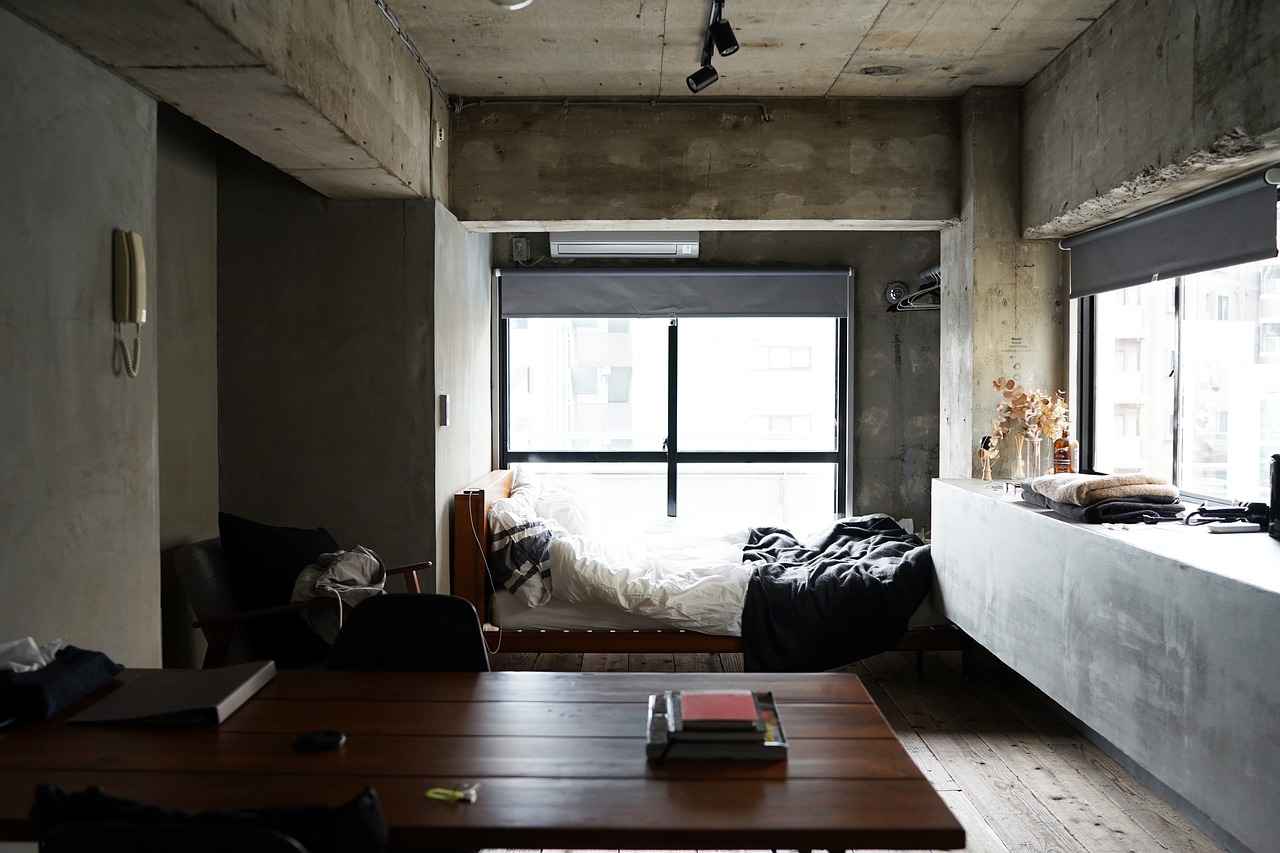
9. Minimalist Bed Wall Ideas for a Clean Aesthetic
In today’s fast-paced world, many individuals are seeking refuge in their homes, aiming to create a peaceful and serene environment. A minimalist bed wall design can significantly contribute to this goal by promoting a clutter-free aesthetic that encourages relaxation. This article explores various ideas for achieving a simple yet elegant bed wall that embodies the principles of minimalism.
Minimalism is not just a design trend; it is a lifestyle choice that emphasizes simplicity and functionality. By focusing on essential elements, you can create a space that feels open and inviting. The bed wall, being a focal point in the bedroom, plays a crucial role in establishing this ambiance.
One of the most effective ways to achieve a minimalist bed wall is through a monochromatic color scheme. This approach involves using varying shades of a single color to create depth while maintaining a cohesive look. For instance, soft grays or muted whites can evoke a sense of tranquility. You can enhance this effect by incorporating different textures, such as a smooth wall finish paired with a plush headboard.
Minimalism does not mean sacrificing style. Choosing simple decor elements can add character without overwhelming the space. Consider a few carefully selected pieces, such as:
- A single piece of artwork that resonates with you.
- A small plant to bring a touch of nature indoors.
- Stylish wall sconces for ambient lighting.
These elements can enhance your bed wall while keeping the overall design uncluttered.
Incorporating functional furniture can also align with minimalist principles. A floating shelf above the bed can serve as both a decorative and practical feature. Use it to display a few select books or decorative items, ensuring that it complements the overall aesthetic without adding visual clutter.
While minimalism emphasizes simplicity, incorporating texture can add visual interest. Consider using textured wall treatments such as:
- Subtle wallpaper with a delicate pattern.
- Wood paneling in a light finish.
- Fabric wall hangings for a soft touch.
These treatments can create a sophisticated backdrop for your bed, enhancing the feeling of serenity.
Mirrors are a fantastic addition to a minimalist bed wall, as they can create an illusion of space and enhance natural light. A large statement mirror above the bed can serve as a focal point while reflecting light and making the room feel larger. Choose a frame that aligns with your minimalist theme, such as a simple black or wooden frame.
In minimalist design, negative space is just as important as the elements you choose to include. Allowing for empty space around your bed wall can create a sense of calm and balance. Avoid overcrowding the wall with decor, and instead, focus on a few well-placed items that draw the eye.
While minimalism encourages simplicity, it’s essential to infuse your personality into the design. Consider adding a personalized touch through a small gallery of black-and-white photos or a single, meaningful piece of art. This will make the space feel uniquely yours while maintaining a clean aesthetic.
By implementing these minimalist bed wall ideas, you can create a serene and inviting atmosphere that promotes relaxation. Embrace the beauty of simplicity and transform your bedroom into a peaceful retreat.
9.1. Monochromatic Color Schemes
When it comes to creating a serene and stylish bedroom, monochromatic color schemes stand out as a powerful design choice. This approach utilizes varying shades of a single color to foster a sense of harmony and balance, making your space feel cohesive and inviting. In this section, we will explore how to effectively choose and apply monochromatic colors in your bedroom to enhance its minimalist aesthetic.
A monochromatic color scheme involves using different tones, tints, and shades of one color. This method allows for a range of visual depth while maintaining a unified look. For example, if you choose blue as your base color, you can incorporate light sky blue, deep navy, and soft pastel shades to create a layered effect. This technique not only simplifies the design process but also promotes a tranquil atmosphere, ideal for a restful bedroom.
Selecting the right color is crucial in achieving the desired ambiance. Here are some popular color choices and their psychological effects:
- Blue: Known for its calming properties, blue can help reduce stress and promote relaxation.
- Green: Associated with nature, green can create a refreshing and rejuvenating environment.
- Gray: A versatile neutral, gray can evoke sophistication and tranquility when paired with lighter shades.
- Beige: This warm, earthy tone can create a cozy and inviting space, perfect for a restful retreat.
Once you’ve selected your base color, the next step is to play with its shades and tints. Here are some tips on how to achieve balance:
- Light and Dark Contrast: Use lighter shades for larger areas, such as walls, and darker shades for accents like bedding or decorative items. This contrast creates visual interest without overwhelming the senses.
- Texture Variation: Incorporate different textures in your monochromatic palette. For example, combine smooth fabrics with rough textures to add depth and dimension.
- Accent Pieces: Use decorative elements, such as artwork or throw pillows, in contrasting shades of your chosen color to draw the eye and enhance the overall design.
Implementing a monochromatic color scheme in your bedroom can be done through various elements:
- Walls: Paint your walls in a soft hue of your chosen color to set a calming foundation.
- Bedding: Select bedding that features different shades of the same color, ensuring a cohesive yet dynamic look.
- Accessories: Use lamps, curtains, and rugs in complementary shades to tie the room together.
By thoughtfully selecting and applying a monochromatic color scheme, you can create a bedroom that is not only visually appealing but also promotes a sense of peace and tranquility. This design approach allows for versatility and creativity, enabling you to express your personal style while maintaining a minimalist aesthetic. Embrace the beauty of monochromatic colors, and transform your bedroom into a stylish sanctuary that invites relaxation and rejuvenation.
9.2. Simple Decor Elements for Impact
When it comes to bedroom design, minimalism can often lead to a more peaceful and serene environment. While some may think that simplicity equates to blandness, the truth is that even the most minimal decor can make a significant impact. This section will guide you on how to select simple decor elements that add character without overwhelming your space.
- Choose a Focal Point: Every room needs a focal point. In a bedroom, this could be the bed itself or a piece of artwork. Selecting one key item to draw attention to can help maintain a clean aesthetic while still providing interest.
- Incorporate Natural Elements: Plants are a fantastic way to introduce life into your space. A single potted plant on a bedside table or a small succulent on a shelf can provide a refreshing touch without cluttering the area.
- Opt for Textured Fabrics: Simple decor doesn’t mean sacrificing texture. Consider using cushions, throws, or a soft rug to add depth. Choose fabrics that complement each other to create a cohesive look.
- Utilize Functional Decor: Items such as stylish storage boxes or decorative trays can serve a dual purpose—functionality and aesthetics. This approach ensures that your decor remains practical while still being visually appealing.
- Incorporate Subtle Patterns: While keeping it simple, consider adding a touch of pattern through textiles. A geometric print on a throw pillow or a soft striped blanket can introduce visual interest without overwhelming the senses.
When selecting decor elements, it’s essential to focus on quality over quantity. A few well-chosen pieces can speak volumes. For instance, a large canvas painting with a simple design can act as a statement piece, drawing the eye and enhancing the room’s overall vibe.
Furthermore, consider the color palette of your room. Sticking to a neutral or monochromatic scheme can help maintain a calm atmosphere. However, don’t shy away from incorporating a pop of color through a single decor item, like a vibrant vase or a unique sculpture. This can create a striking contrast that adds character without cluttering the space.
Lighting also plays a crucial role in enhancing minimal decor. Soft, warm lighting can create a cozy ambiance, making the space feel inviting. Consider using wall sconces or table lamps with clean lines that complement your decor style while providing functional lighting.
In summary, achieving a minimalist bedroom doesn’t mean sacrificing style or personality. By carefully selecting simple decor elements that serve a purpose, you can create a space that feels both inviting and stylish. Remember, the goal is to create a balance where each piece complements the others, resulting in a harmonious and restful environment.
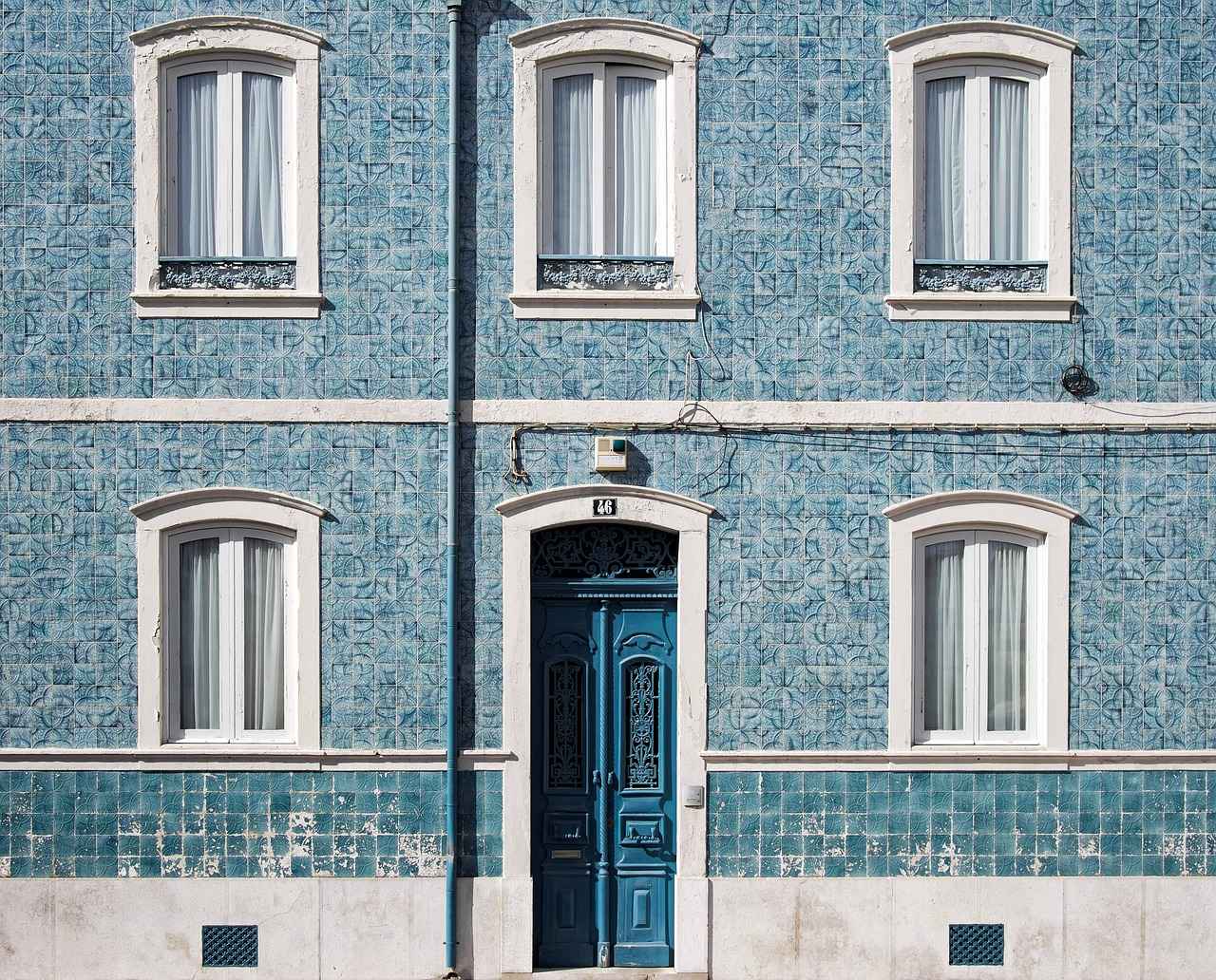
10. Bold Patterns and Prints for a Statement Wall
Bold patterns can transform your bed wall into a captivating focal point, infusing your bedroom with personality and style. By selecting the right prints and incorporating them thoughtfully, you can create a space that reflects your unique taste and enhances the overall ambiance of your room. This section will explore various print options and provide insights on how to effectively integrate them into your design.
When considering bold patterns, it’s essential to understand the impact they can have on your space. Patterns can evoke emotions, set the mood, and even alter the perception of room size. Here are some popular print options you might consider:
- Geometric Patterns: These designs can add a modern flair to your bedroom. Their clean lines and shapes create a sense of order and sophistication. You can use geometric wallpaper or fabric for a headboard, or even incorporate it through artwork.
- Floral Prints: For those looking to add a touch of elegance, floral patterns can bring warmth and romance to your space. They can range from large, bold blooms to delicate, subtle designs. Consider using floral wallpaper or decorative pillows to introduce this style.
- Stripes: Striped patterns can create an illusion of height or width, depending on their orientation. Vertical stripes can make a room feel taller, while horizontal stripes can make it feel more spacious. Use striped wallpaper or bed linens to play with this effect.
- Animal Prints: For a more adventurous approach, animal prints can add a wild and exotic touch. These patterns work well as accent pieces—think a statement wall or a bold bedspread that draws the eye.
Incorporating these patterns into your design requires careful consideration to maintain balance and harmony. Here are some practical tips:
- Choose a Focal Point: Select one wall to serve as the statement wall. This helps to create a visual anchor in the room and prevents the space from feeling overwhelming.
- Mix and Match: Don’t be afraid to mix patterns, but do so with caution. Pair bold patterns with more subdued ones to create contrast without clashing. For instance, a bold geometric print can be balanced with solid-colored bedding or curtains.
- Consider Scale: The scale of the pattern is crucial. Large prints can dominate a space, while smaller patterns can be more subtle. Ensure that the pattern size complements the room’s dimensions and existing decor.
- Use Accessories: If you’re hesitant to commit to a bold pattern on the walls, consider using accessories like throw pillows, blankets, or artwork. This allows you to experiment with styles without a permanent commitment.
Lastly, always remember to consider the color palette of your room. Bold patterns can clash with existing colors if not chosen carefully. Aim for a cohesive look by selecting patterns that incorporate colors already present in your decor. This will create a harmonious flow throughout your bedroom.
In conclusion, bold patterns and prints can dramatically enhance the visual appeal of your bed wall, adding excitement and character to your bedroom. By exploring various options and incorporating them thoughtfully, you can create a stunning design that resonates with your personal style. Embrace the power of patterns to elevate your space into a stylish sanctuary.
10.1. Geometric Patterns for Modern Flair
Geometric patterns are a fantastic way to infuse a contemporary vibe into your bedroom decor, particularly on your bed wall. Utilizing these designs not only enhances the visual appeal of your space but also creates a dynamic focal point that draws the eye. In this section, we will explore various ways to effectively incorporate geometric patterns into your bed wall design.
To begin with, consider the color palette when selecting geometric patterns. Bold colors can make a statement, while softer hues can create a more subtle effect. For instance, a navy blue wall adorned with white geometric shapes can evoke a sense of sophistication, whereas bright colors like yellow or teal can bring energy and modernity to the room.
One popular method of incorporating geometric designs is through wallpapers. Modern wallpapers come in a plethora of geometric patterns, from chevrons to hexagons, allowing for endless customization. When choosing wallpaper, consider the scale of the pattern in relation to your room size. Larger patterns can make a bold statement in spacious rooms, while smaller patterns may be more suitable for compact spaces.
In addition to wallpaper, you can also explore stencils or decals as an alternative method of adding geometric designs. These options are particularly appealing for those who prefer a temporary or DIY approach. Stencils can be painted directly onto the wall, allowing for personalized designs, while decals can be easily applied and removed without damaging the wall surface.
Another innovative way to incorporate geometric patterns is through textiles. Consider using geometric-patterned bed linens, throw pillows, or even a decorative quilt. These elements can complement your bed wall design while adding layers of texture and comfort to your bedroom. Mixing and matching different geometric styles can create a visually interesting and cohesive look.
For those who prefer a more three-dimensional approach, geometric shelving units can serve as both functional and decorative elements. These shelves can showcase books, plants, or decorative items, all while maintaining the geometric theme. Positioning these shelves strategically above or near the bed can enhance the overall aesthetic without overwhelming the space.
Finally, consider incorporating art pieces that feature geometric designs. This can range from framed prints to large canvas artworks. Art not only adds character to your bed wall but also provides an opportunity to express your personal style. Look for pieces that resonate with your color scheme and overall decor theme.
In summary, geometric patterns can significantly elevate your bedroom decor by introducing a modern flair to your bed wall. Whether through wallpapers, textiles, or art, there are numerous ways to incorporate these designs effectively. By carefully selecting colors, patterns, and complementary elements, you can create a stunning focal point that reflects your unique style and enhances the ambiance of your personal sanctuary.
10.2. Floral Prints for a Touch of Elegance
Floral prints have long been associated with elegance and romance, making them a perfect choice for bedroom decor. They can transform a simple space into a serene retreat, inviting a sense of calm and beauty. If you’re looking to incorporate floral patterns into your bed wall design, this guide will provide you with practical tips and creative ideas to achieve a soft and sophisticated look.
When choosing floral prints, consider the color palette you wish to create. Soft pastels, such as blush pink, lavender, and mint green, can evoke a gentle, tranquil atmosphere. On the other hand, vibrant colors like deep reds and bold yellows can energize the space. It’s essential to select colors that harmonize with your existing decor to maintain a cohesive look.
- 1. Choose the Right Floral Pattern: Different floral patterns can evoke varying feelings. Large, bold prints can serve as a statement piece, while delicate, small-scale patterns can create a more subtle backdrop.
- 2. Mix and Match: Don’t be afraid to combine different floral patterns. For example, pairing a large floral print with smaller, complementary designs can add depth and interest to your bed wall.
- 3. Use Wallpaper: Floral wallpaper is an excellent way to make a bold statement. Opt for removable wallpaper if you want the flexibility to change your decor frequently.
- 4. Incorporate Textiles: Consider using floral-printed bedding, throw pillows, or even a quilt to enhance the floral theme. These elements can soften the overall look and add layers of texture.
Another effective way to incorporate floral prints is through artwork. Hang framed floral prints or canvas art above your bed to create an eye-catching focal point. This not only adds visual interest but also allows you to express your personal style. To achieve a balanced look, ensure that the artwork complements the colors in your bedding and other decor elements.
Additionally, consider the use of accessories. Floral-patterned curtains or a rug can tie the room together, enhancing the romantic ambiance. Plants and flowers themselves can also serve as decor elements. A vase of fresh flowers on your nightstand or a potted plant can bring life and freshness to your bedroom.
Finally, lighting plays a crucial role in showcasing floral prints. Soft, warm lighting can accentuate the beauty of floral patterns, creating a cozy and inviting atmosphere. Consider using wall sconces or fairy lights to enhance the romantic vibe of your floral-themed bed wall.
In conclusion, incorporating floral prints into your bed wall design can create a stunning and elegant atmosphere. By choosing the right patterns, colors, and accessories, you can achieve a look that reflects your personal style and transforms your bedroom into a romantic sanctuary.
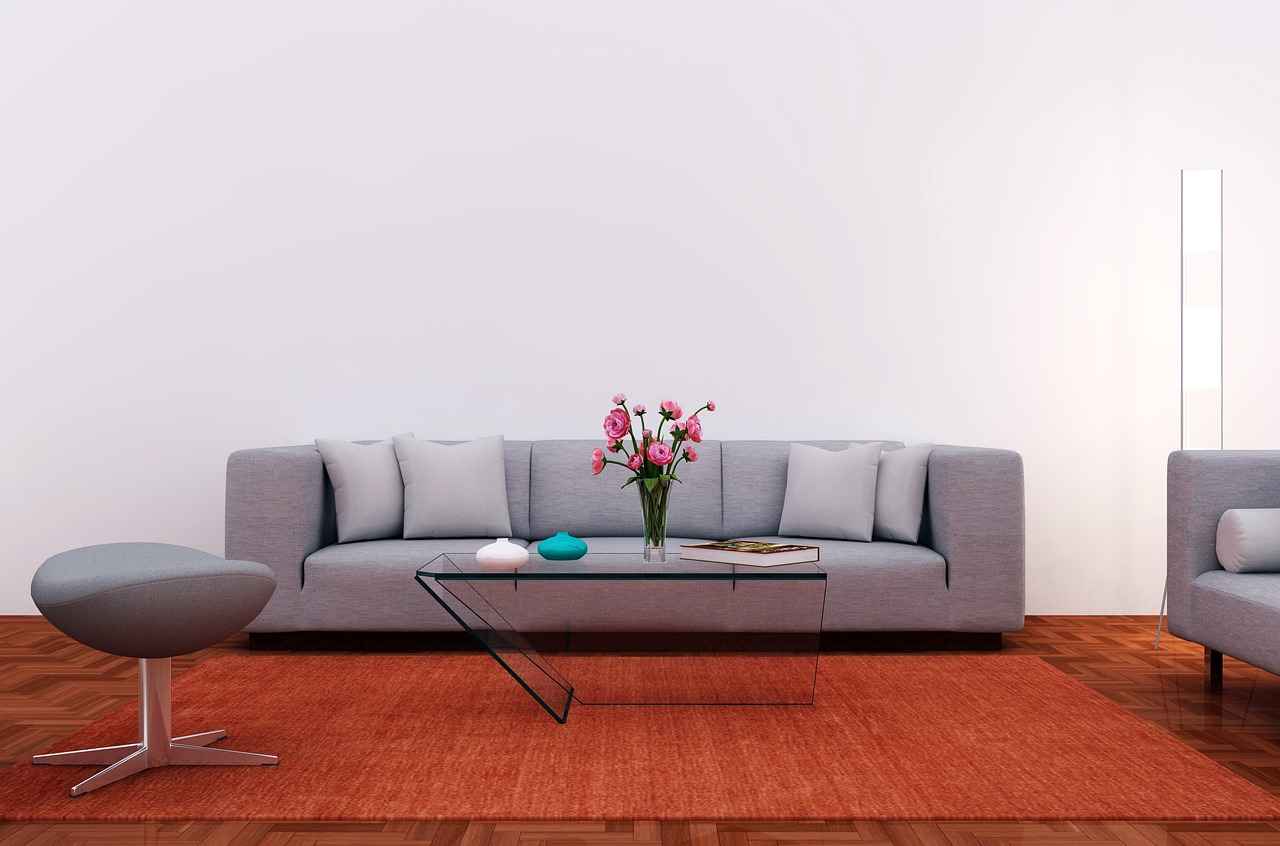
11. Seasonal Decor Changes for a Fresh Look
Changing your bed wall decor with the seasons can keep your bedroom feeling fresh and inviting. By swapping out decor elements to reflect the changing seasons, you can create an atmosphere that resonates with nature and enhances your personal space. Here are some creative ideas for seasonal decor swaps that will elevate your bedroom throughout the year.
As the days grow longer and warmer, it’s the perfect time to refresh your bedroom with light and airy decor. Consider the following ideas:
- Bright Color Palettes: Embrace pastel shades or vibrant hues like sunny yellows and soft pinks to evoke the spirit of spring.
- Floral Accents: Incorporate floral patterns through throw pillows, bed linens, or even a statement wall using floral wallpaper.
- Natural Elements: Introduce elements like wooden frames or rattan decor to bring a touch of nature indoors.
- Light Fabrics: Swap heavy blankets for lightweight quilts or cotton throws that are perfect for warmer temperatures.
As the weather turns cooler, it’s essential to create a warm and cozy atmosphere in your bedroom. Here are some tips for transitioning your decor:
- Warm Color Schemes: Opt for rich, warm colors like deep reds, oranges, and browns to create a welcoming environment.
- Textured Fabrics: Introduce plush materials such as velvet or chunky knit blankets to add warmth and comfort.
- Seasonal Artwork: Change out artwork to reflect autumn or winter themes, such as landscapes with fall foliage or serene snowy scenes.
- Cozy Lighting: Use soft, warm lighting options like fairy lights or table lamps with warm-toned bulbs to create a snug ambiance.
Accessories play a crucial role in seasonal decor. Here are some ideas for items that can be easily swapped:
- Seasonal Throw Pillows: Change your throw pillows to match the season’s color palette. Look for designs that reflect seasonal themes.
- Wall Hangings: Use removable wall decals or fabric wall hangings that can be updated easily with each season.
- Seasonal Plants: Incorporate seasonal plants or flowers, like tulips in spring or pine branches in winter, to bring life to your decor.
When changing your decor, it’s important to maintain a cohesive look. Here are some tips:
- Color Coordination: Ensure that the colors you choose for each season complement each other. This will create a harmonious flow throughout the year.
- Theme Consistency: Stick to a particular theme for each season. For example, if you choose a rustic theme for autumn, continue with that style in your decor choices.
- Functional Decor: Consider decor items that serve a purpose, such as decorative storage boxes or stylish bedside tables, to keep your space organized while looking good.
By embracing seasonal decor changes, you can create a bedroom that feels dynamic and alive, reflecting the beauty of each season. Not only does this practice enhance your personal space, but it also provides a refreshing change that can uplift your mood and inspire creativity.
11.1. Spring and Summer Decor Ideas
As the seasons change, so too does our desire to refresh our living spaces. Spring and summer decor ideas focus on creating a light and airy atmosphere that mirrors the beauty of the outdoors. By incorporating seasonal elements, you can evoke the essence of these vibrant months and enhance your bedroom’s ambiance.
One of the easiest ways to achieve a spring and summer feel in your bedroom is by choosing a light color palette. Soft pastels, crisp whites, and gentle earth tones can create a serene environment. Consider painting your bed wall in a soft mint green or pale lavender to reflect the colors of blooming flowers. These hues not only brighten the space but also promote a sense of calm and relaxation.
To complement your color choices, incorporate natural textures that bring the outdoors inside. Wood, linen, and cotton are excellent materials that can add warmth and depth to your decor. For instance, a wooden headboard paired with soft linen bedding can create an inviting focal point. Additionally, consider adding woven baskets or jute rugs to introduce an organic touch that enhances the overall aesthetic.
Artwork plays a crucial role in setting the tone of your bedroom. During spring and summer, opt for nature-inspired artwork that reflects the season. Think botanical prints, landscapes, or abstract pieces in bright colors. Arranging a gallery wall above your bed can showcase your personality while bringing life to the space. Alternatively, consider large-scale pieces that can serve as a dramatic focal point.
Plants are a fantastic way to breathe life into your bedroom. Incorporating indoor plants not only purifies the air but also adds a vibrant touch. Consider using hanging planters or a vertical garden above your bed for a stunning visual effect. Popular choices for bedroom plants include snake plants, pothos, and peace lilies, which are known for their low maintenance and air-purifying properties.
Switching out your bedding for lighter fabrics can significantly change the feel of your bedroom. Choose breathable materials like cotton or linen that promote comfort during warmer months. Opt for lighter colors and patterns, such as floral prints or stripes, to enhance the seasonal vibe. Layering with lightweight throws can add texture and warmth without overwhelming the space.
Maximizing natural light is essential for achieving a bright and airy atmosphere. Use sheer curtains that allow sunlight to filter through while maintaining privacy. Consider positioning mirrors strategically to reflect light and make your room feel more spacious. A large statement mirror above the bed can also serve as a stunning decorative element.
Small decor changes can make a big impact. Swap out heavier accessories for lighter, seasonal accents. Consider adding colorful cushions, light throws, or decorative pillows that echo the colors of spring and summer. These accents can easily be changed with the seasons, allowing you to keep your decor feeling fresh and updated.
To further enhance the spring and summer vibe, consider creating a cozy outdoor feel within your bedroom. Incorporate elements like a small reading nook with comfy seating, or a window seat adorned with cushions and throws. This not only creates a relaxing space but also invites the beauty of the outdoors into your home.
In summary, transforming your bedroom into a spring and summer sanctuary is all about embracing lightness and nature. By incorporating light color palettes, natural textures, and seasonal decor, you can create a refreshing and inviting atmosphere that reflects the beauty of these vibrant seasons.
11.2. Autumn and Winter Accents
As the leaves change and temperatures drop, it’s time to transition your bedroom decor to reflect the warmth and coziness of autumn and winter. Warm colors and cozy textures can create a welcoming atmosphere, making your space feel inviting during the colder months. This guide will help you explore various ways to enhance your bed wall decor, ensuring it complements the seasonal shift.
To start, consider incorporating warm color palettes into your bed wall design. Shades like deep reds, burnt oranges, and rich browns evoke feelings of comfort and warmth. You can achieve this by:
- Painting the Wall: A fresh coat of paint in a warm hue can instantly transform your space. Opt for tones like terracotta or warm taupe for a snug feel.
- Using Accent Decor: Add throw pillows or blankets in warm colors to your bed. This not only enhances comfort but also ties the color scheme together.
Textures play a crucial role in creating a cozy atmosphere. Here are some ideas to incorporate various textures into your bed wall:
- Layered Fabrics: Use a mix of materials such as velvet, wool, and cotton for your bedding and wall hangings. This layering creates depth and visual interest.
- Textured Wall Treatments: Consider adding fabric panels or textured wallpaper to your bed wall. These elements can enhance warmth and create a focal point in the room.
Artwork can significantly impact the feel of your space. Transitioning your artwork for the season can be a fun and creative way to refresh your bed wall:
- Seasonal Prints: Swap out your existing artwork for pieces that feature autumnal themes, such as nature scenes or abstract designs in warm colors.
- Gallery Walls: Create a gallery wall that showcases seasonal photos or artwork. This not only adds a personal touch but also keeps your decor dynamic.
Lighting is essential in creating a warm atmosphere. Here are some ideas to enhance your bed wall lighting:
- Soft Lighting: Use warm-toned light bulbs in your lamps and fixtures to create a soft glow that envelops the room.
- Fairy Lights: Incorporate string lights or fairy lights along your bed wall for a whimsical touch. This can add a cozy, inviting ambiance perfect for colder nights.
Lastly, don’t forget to add seasonal accents that reflect the beauty of autumn and winter. Consider:
- Decorative Throws: Drape a chunky knit throw over your bed or a chair to add warmth and texture.
- Seasonal Plants: Incorporate plants that thrive indoors during winter, such as poinsettias or evergreens. These can bring a touch of nature indoors, enhancing the cozy feel.
By thoughtfully incorporating warm colors, cozy textures, and seasonal decor into your bed wall design, you can create a serene and welcoming environment that reflects the essence of autumn and winter. This seasonal transition not only enhances the aesthetic appeal of your bedroom but also makes it a comforting retreat during the colder months.
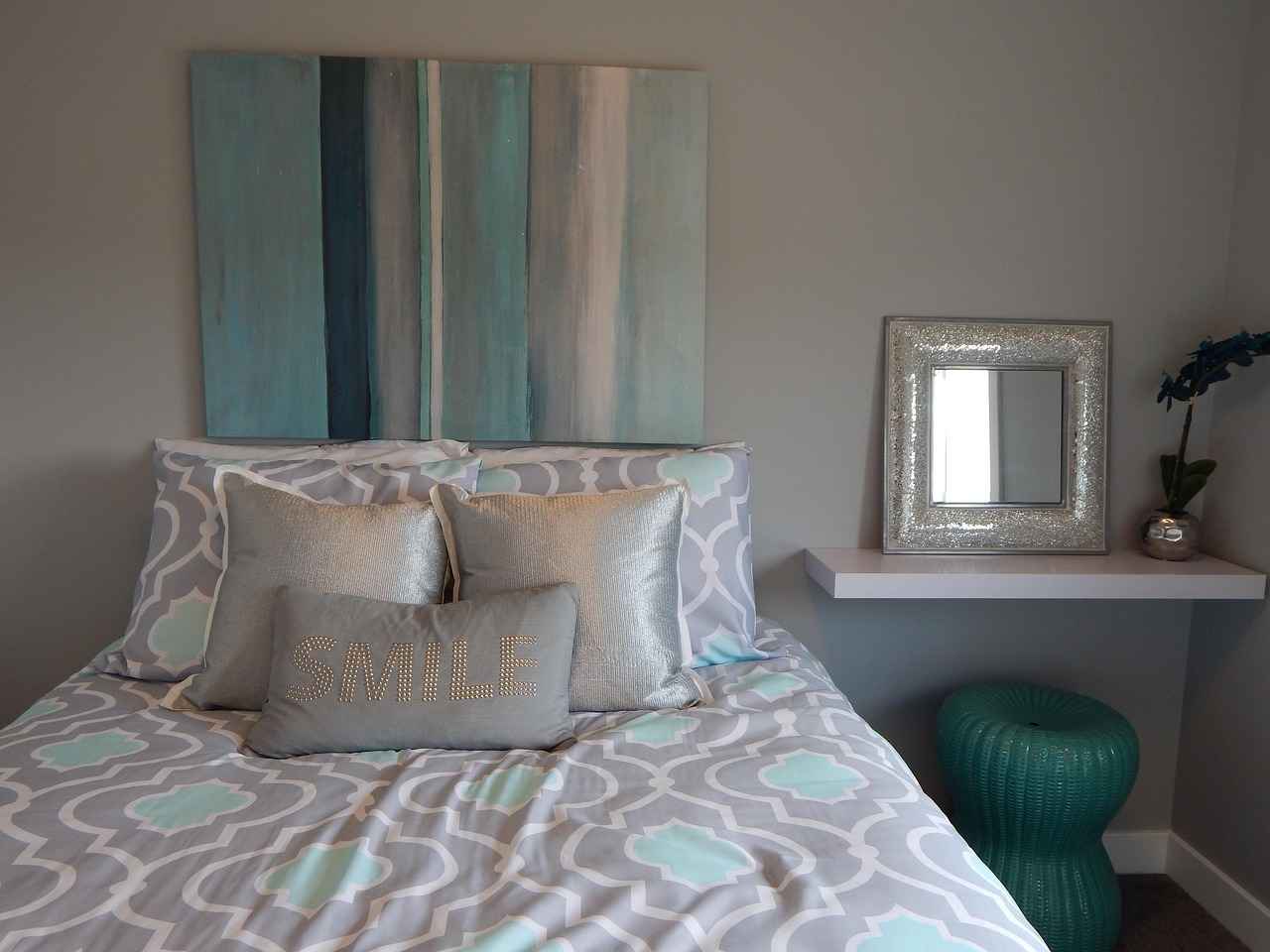
12. Final Tips for Designing Your Bed Wall
Designing your bed wall is a crucial aspect of creating a cozy and inviting bedroom atmosphere. It serves as a focal point that can reflect your personality and style, making it essential to implement the right design elements. Here are some final tips and tricks to ensure your bedroom decor aligns with your personal style and preferences.
- Assess Your Space: Before diving into design, take a moment to assess the size and layout of your bedroom. Consider how the bed wall interacts with other elements in the room, such as windows, doors, and furniture.
- Choose a Color Palette: Selecting a cohesive color palette is fundamental. Colors can evoke emotions; for instance, soft blues and greens can create a calming effect, while bold reds and yellows can energize the space. Aim for a palette that resonates with your style and promotes the desired mood.
- Incorporate Texture: Adding texture can significantly enhance your bed wall. Consider using materials such as wood, fabric, or even textured paint. These elements can create depth and visual interest, making the wall more engaging.
Wall Treatments: Explore various wall treatments to elevate your design. Here are some popular options:
| Wall Treatment | Description |
|---|---|
| Wallpaper | Offers a wide range of patterns and textures to suit your style. |
| Wood Paneling | Adds warmth and a rustic feel, perfect for a cozy bedroom. |
| Paint | A simple way to refresh the space; consider an accent wall for impact. |
Artwork and Decor: The right artwork can transform your bed wall into a captivating focal point. When selecting art, think about:
- Personal Connection: Choose pieces that resonate with you, whether they are family photos or abstract art.
- Size and Scale: Large-scale artwork can create a bold statement, while smaller pieces can be grouped for a gallery effect.
Lighting: Effective lighting can enhance the beauty of your bed wall. Consider these options:
- Wall Sconces: These can provide both functional and ambient lighting, adding elegance to your decor.
- String Lights: Incorporating string lights can add a whimsical touch, perfect for creating a cozy atmosphere.
Functional Decor: Don’t forget about functionality. Incorporating shelves can serve as both a decorative and practical element. Floating shelves can display books or plants, while built-in shelving can maximize space and create a custom look.
Seasonal Changes: Refresh your bed wall decor with the changing seasons. Consider swapping out artwork, changing color accents, or adding seasonal decor elements to keep the space feeling fresh and inviting.
By implementing these tips, you can create a bed wall that not only elevates your bedroom decor but also reflects your unique style and preferences. Remember, the key is to create a harmonious balance between aesthetics and functionality, ensuring your bedroom remains a sanctuary you love.
Frequently Asked Questions
- What color should I choose for my bed wall?
Choosing the right color can set the mood for your entire bedroom. Consider colors that evoke feelings you want, like calming blues or energizing yellows. Don’t forget to test samples on your wall to see how they look in different lighting!
- How can I add texture to my bed wall?
Texture can be added through various treatments like wallpaper, wood paneling, or fabric. Each option brings its own charm—wood adds warmth, while wallpaper can introduce patterns and colors that make your space pop!
- What are some unique headboard ideas?
Unique headboards can really redefine your bed wall. Consider DIY projects, upholstered designs, or even reclaimed wood for a rustic touch. Your headboard can be a statement piece that reflects your personal style!
- How do I incorporate artwork above my bed?
Artwork can transform your bed wall into a focal point. You can create a gallery wall with personal photos or choose a large-scale piece that draws the eye. Just ensure it complements your overall decor for a cohesive look!
- What lighting options work best for a bed wall?
Wall sconces and string lights are great choices for adding ambiance. Sconces provide functional lighting while also being stylish, and string lights can create a cozy, whimsical atmosphere above your bed!


